How to write a case study — examples, templates, and tools

It’s a marketer’s job to communicate the effectiveness of a product or service to potential and current customers to convince them to buy and keep business moving. One of the best methods for doing this is to share success stories that are relatable to prospects and customers based on their pain points, experiences, and overall needs.
That’s where case studies come in. Case studies are an essential part of a content marketing plan. These in-depth stories of customer experiences are some of the most effective at demonstrating the value of a product or service. Yet many marketers don’t use them, whether because of their regimented formats or the process of customer involvement and approval.
A case study is a powerful tool for showcasing your hard work and the success your customer achieved. But writing a great case study can be difficult if you’ve never done it before or if it’s been a while. This guide will show you how to write an effective case study and provide real-world examples and templates that will keep readers engaged and support your business.
In this article, you’ll learn:

What is a case study?
How to write a case study, case study templates, case study examples, case study tools.
A case study is the detailed story of a customer’s experience with a product or service that demonstrates their success and often includes measurable outcomes. Case studies are used in a range of fields and for various reasons, from business to academic research. They’re especially impactful in marketing as brands work to convince and convert consumers with relatable, real-world stories of actual customer experiences.
The best case studies tell the story of a customer’s success, including the steps they took, the results they achieved, and the support they received from a brand along the way. To write a great case study, you need to:
- Celebrate the customer and make them — not a product or service — the star of the story.
- Craft the story with specific audiences or target segments in mind so that the story of one customer will be viewed as relatable and actionable for another customer.
- Write copy that is easy to read and engaging so that readers will gain the insights and messages intended.
- Follow a standardized format that includes all of the essentials a potential customer would find interesting and useful.
- Support all of the claims for success made in the story with data in the forms of hard numbers and customer statements.
Case studies are a type of review but more in depth, aiming to show — rather than just tell — the positive experiences that customers have with a brand. Notably, 89% of consumers read reviews before deciding to buy, and 79% view case study content as part of their purchasing process. When it comes to B2B sales, 52% of buyers rank case studies as an important part of their evaluation process.
Telling a brand story through the experience of a tried-and-true customer matters. The story is relatable to potential new customers as they imagine themselves in the shoes of the company or individual featured in the case study. Showcasing previous customers can help new ones see themselves engaging with your brand in the ways that are most meaningful to them.
Besides sharing the perspective of another customer, case studies stand out from other content marketing forms because they are based on evidence. Whether pulling from client testimonials or data-driven results, case studies tend to have more impact on new business because the story contains information that is both objective (data) and subjective (customer experience) — and the brand doesn’t sound too self-promotional.

Case studies are unique in that there’s a fairly standardized format for telling a customer’s story. But that doesn’t mean there isn’t room for creativity. It’s all about making sure that teams are clear on the goals for the case study — along with strategies for supporting content and channels — and understanding how the story fits within the framework of the company’s overall marketing goals.
Here are the basic steps to writing a good case study.
1. Identify your goal
Start by defining exactly who your case study will be designed to help. Case studies are about specific instances where a company works with a customer to achieve a goal. Identify which customers are likely to have these goals, as well as other needs the story should cover to appeal to them.
The answer is often found in one of the buyer personas that have been constructed as part of your larger marketing strategy. This can include anything from new leads generated by the marketing team to long-term customers that are being pressed for cross-sell opportunities. In all of these cases, demonstrating value through a relatable customer success story can be part of the solution to conversion.
2. Choose your client or subject
Who you highlight matters. Case studies tie brands together that might otherwise not cross paths. A writer will want to ensure that the highlighted customer aligns with their own company’s brand identity and offerings. Look for a customer with positive name recognition who has had great success with a product or service and is willing to be an advocate.
The client should also match up with the identified target audience. Whichever company or individual is selected should be a reflection of other potential customers who can see themselves in similar circumstances, having the same problems and possible solutions.
Some of the most compelling case studies feature customers who:
- Switch from one product or service to another while naming competitors that missed the mark.
- Experience measurable results that are relatable to others in a specific industry.
- Represent well-known brands and recognizable names that are likely to compel action.
- Advocate for a product or service as a champion and are well-versed in its advantages.
Whoever or whatever customer is selected, marketers must ensure they have the permission of the company involved before getting started. Some brands have strict review and approval procedures for any official marketing or promotional materials that include their name. Acquiring those approvals in advance will prevent any miscommunication or wasted effort if there is an issue with their legal or compliance teams.
3. Conduct research and compile data
Substantiating the claims made in a case study — either by the marketing team or customers themselves — adds validity to the story. To do this, include data and feedback from the client that defines what success looks like. This can be anything from demonstrating return on investment (ROI) to a specific metric the customer was striving to improve. Case studies should prove how an outcome was achieved and show tangible results that indicate to the customer that your solution is the right one.
This step could also include customer interviews. Make sure that the people being interviewed are key stakeholders in the purchase decision or deployment and use of the product or service that is being highlighted. Content writers should work off a set list of questions prepared in advance. It can be helpful to share these with the interviewees beforehand so they have time to consider and craft their responses. One of the best interview tactics to keep in mind is to ask questions where yes and no are not natural answers. This way, your subject will provide more open-ended responses that produce more meaningful content.
4. Choose the right format
There are a number of different ways to format a case study. Depending on what you hope to achieve, one style will be better than another. However, there are some common elements to include, such as:
- An engaging headline
- A subject and customer introduction
- The unique challenge or challenges the customer faced
- The solution the customer used to solve the problem
- The results achieved
- Data and statistics to back up claims of success
- A strong call to action (CTA) to engage with the vendor
It’s also important to note that while case studies are traditionally written as stories, they don’t have to be in a written format. Some companies choose to get more creative with their case studies and produce multimedia content, depending on their audience and objectives. Case study formats can include traditional print stories, interactive web or social content, data-heavy infographics, professionally shot videos, podcasts, and more.
5. Write your case study
We’ll go into more detail later about how exactly to write a case study, including templates and examples. Generally speaking, though, there are a few things to keep in mind when writing your case study.
- Be clear and concise. Readers want to get to the point of the story quickly and easily, and they’ll be looking to see themselves reflected in the story right from the start.
- Provide a big picture. Always make sure to explain who the client is, their goals, and how they achieved success in a short introduction to engage the reader.
- Construct a clear narrative. Stick to the story from the perspective of the customer and what they needed to solve instead of just listing product features or benefits.
- Leverage graphics. Incorporating infographics, charts, and sidebars can be a more engaging and eye-catching way to share key statistics and data in readable ways.
- Offer the right amount of detail. Most case studies are one or two pages with clear sections that a reader can skim to find the information most important to them.
- Include data to support claims. Show real results — both facts and figures and customer quotes — to demonstrate credibility and prove the solution works.
6. Promote your story
Marketers have a number of options for distribution of a freshly minted case study. Many brands choose to publish case studies on their website and post them on social media. This can help support SEO and organic content strategies while also boosting company credibility and trust as visitors see that other businesses have used the product or service.
Marketers are always looking for quality content they can use for lead generation. Consider offering a case study as gated content behind a form on a landing page or as an offer in an email message. One great way to do this is to summarize the content and tease the full story available for download after the user takes an action.
Sales teams can also leverage case studies, so be sure they are aware that the assets exist once they’re published. Especially when it comes to larger B2B sales, companies often ask for examples of similar customer challenges that have been solved.
Now that you’ve learned a bit about case studies and what they should include, you may be wondering how to start creating great customer story content. Here are a couple of templates you can use to structure your case study.
Template 1 — Challenge-solution-result format
- Start with an engaging title. This should be fewer than 70 characters long for SEO best practices. One of the best ways to approach the title is to include the customer’s name and a hint at the challenge they overcame in the end.
- Create an introduction. Lead with an explanation as to who the customer is, the need they had, and the opportunity they found with a specific product or solution. Writers can also suggest the success the customer experienced with the solution they chose.
- Present the challenge. This should be several paragraphs long and explain the problem the customer faced and the issues they were trying to solve. Details should tie into the company’s products and services naturally. This section needs to be the most relatable to the reader so they can picture themselves in a similar situation.
- Share the solution. Explain which product or service offered was the ideal fit for the customer and why. Feel free to delve into their experience setting up, purchasing, and onboarding the solution.
- Explain the results. Demonstrate the impact of the solution they chose by backing up their positive experience with data. Fill in with customer quotes and tangible, measurable results that show the effect of their choice.
- Ask for action. Include a CTA at the end of the case study that invites readers to reach out for more information, try a demo, or learn more — to nurture them further in the marketing pipeline. What you ask of the reader should tie directly into the goals that were established for the case study in the first place.
Template 2 — Data-driven format
- Start with an engaging title. Be sure to include a statistic or data point in the first 70 characters. Again, it’s best to include the customer’s name as part of the title.
- Create an overview. Share the customer’s background and a short version of the challenge they faced. Present the reason a particular product or service was chosen, and feel free to include quotes from the customer about their selection process.
- Present data point 1. Isolate the first metric that the customer used to define success and explain how the product or solution helped to achieve this goal. Provide data points and quotes to substantiate the claim that success was achieved.
- Present data point 2. Isolate the second metric that the customer used to define success and explain what the product or solution did to achieve this goal. Provide data points and quotes to substantiate the claim that success was achieved.
- Present data point 3. Isolate the final metric that the customer used to define success and explain what the product or solution did to achieve this goal. Provide data points and quotes to substantiate the claim that success was achieved.
- Summarize the results. Reiterate the fact that the customer was able to achieve success thanks to a specific product or service. Include quotes and statements that reflect customer satisfaction and suggest they plan to continue using the solution.
- Ask for action. Include a CTA at the end of the case study that asks readers to reach out for more information, try a demo, or learn more — to further nurture them in the marketing pipeline. Again, remember that this is where marketers can look to convert their content into action with the customer.
While templates are helpful, seeing a case study in action can also be a great way to learn. Here are some examples of how Adobe customers have experienced success.
Juniper Networks
One example is the Adobe and Juniper Networks case study , which puts the reader in the customer’s shoes. The beginning of the story quickly orients the reader so that they know exactly who the article is about and what they were trying to achieve. Solutions are outlined in a way that shows Adobe Experience Manager is the best choice and a natural fit for the customer. Along the way, quotes from the client are incorporated to help add validity to the statements. The results in the case study are conveyed with clear evidence of scale and volume using tangible data.

The story of Lenovo’s journey with Adobe is one that spans years of planning, implementation, and rollout. The Lenovo case study does a great job of consolidating all of this into a relatable journey that other enterprise organizations can see themselves taking, despite the project size. This case study also features descriptive headers and compelling visual elements that engage the reader and strengthen the content.
Tata Consulting
When it comes to using data to show customer results, this case study does an excellent job of conveying details and numbers in an easy-to-digest manner. Bullet points at the start break up the content while also helping the reader understand exactly what the case study will be about. Tata Consulting used Adobe to deliver elevated, engaging content experiences for a large telecommunications client of its own — an objective that’s relatable for a lot of companies.
Case studies are a vital tool for any marketing team as they enable you to demonstrate the value of your company’s products and services to others. They help marketers do their job and add credibility to a brand trying to promote its solutions by using the experiences and stories of real customers.
When you’re ready to get started with a case study:
- Think about a few goals you’d like to accomplish with your content.
- Make a list of successful clients that would be strong candidates for a case study.
- Reach out to the client to get their approval and conduct an interview.
- Gather the data to present an engaging and effective customer story.
Adobe can help
There are several Adobe products that can help you craft compelling case studies. Adobe Experience Platform helps you collect data and deliver great customer experiences across every channel. Once you’ve created your case studies, Experience Platform will help you deliver the right information to the right customer at the right time for maximum impact.
To learn more, watch the Adobe Experience Platform story .
Keep in mind that the best case studies are backed by data. That’s where Adobe Real-Time Customer Data Platform and Adobe Analytics come into play. With Real-Time CDP, you can gather the data you need to build a great case study and target specific customers to deliver the content to the right audience at the perfect moment.
Watch the Real-Time CDP overview video to learn more.
Finally, Adobe Analytics turns real-time data into real-time insights. It helps your business collect and synthesize data from multiple platforms to make more informed decisions and create the best case study possible.
Request a demo to learn more about Adobe Analytics.
https://business.adobe.com/blog/perspectives/b2b-ecommerce-10-case-studies-inspire-you
https://business.adobe.com/blog/basics/business-case
https://business.adobe.com/blog/basics/what-is-real-time-analytics

Case Study Analysis: Examples + How-to Guide & Writing Tips
A case study analysis is a typical assignment in business management courses. The task aims to show high school and college students how to analyze a current situation, determine what problems exist, and develop the best possible strategy to achieve the desired outcome.
Many students feel anxious about writing case analyses because being told to analyze a case study and provide a solution can seem like a big task. That is especially so when working with real-life scenarios. However, you can rest assured writing a case analysis paper is easier than you think. Just keep reading this article and you will find case study examples for students and the advice provided by Custom-writing experts!
- 👣 Main Steps
- 🕵 Preparing the Case
🔬 Analyzing the Case
- 📑 Format & Structure
- 🙅 Things to Avoid
- 🏁 Conclusion
🔗 References
👣 writing a case study analysis: main steps.
Business management is built on case analysis. Every single economic result shows that the methods and instruments employed were either well-timed and expedient, in the event of success, or not, in case of failure. These two options indicate whether the strategy is efficient (and should be followed) or requires corrections (or complete change). Such an approach to the case study will make your writing piece more proficient and valuable for the reader. The following steps will direct your plan for writing a case study analysis.
Step 1: Preliminary work
- Make notes and highlight the numbers and ideas that could be quoted.
- Single out as many problems as you can, and briefly mark their underlying issues. Then make a note of those responsible. In the report, you will use two to five of the problems, so you will have a selection to choose from.
- Outline a possible solution to each of the problems you found. Course readings and outside research shall be used here. Highlight your best and worst solution for further reference.

Step 2: Drafting the Case
- Provide a general description of the situation and its history.
- Name all the problems you are going to discuss.
- Specify the theory used for the analysis.
- Present the assumptions that emerged during the analysis, if any.
- Describe the detected problems in more detail.
- Indicate their link to, and effect on, the general situation.
- Explain why the problems emerged and persist.
- List realistic and feasible solutions to the problems you outlined, in the order of importance.
- Specify your predicted results of such changes.
- Support your choice with reliable evidence (i.e., textbook readings, the experience of famous companies, and other external research).
- Define the strategies required to fulfill your proposed solution.
- Indicate the responsible people and the realistic terms for its implementation.
- Recommend the issues for further analysis and supervision.
Step 3: Finalizing the Case
Like any other piece of writing, a case analysis requires post-editing. Carefully read it through, looking for inconsistencies and gaps in meaning. Your purpose is to make it look complete, precise, and convincing.
🕵 Preparing a Case for Analysis
Your professor might give you various case study examples from which to choose, or they may just assign you a particular case study. To conduct a thorough data analysis, you must first read the case study. This might appear to be obvious. However, you’d be surprised at how many students don’t take adequate time to complete this part.
Read the case study very thoroughly, preferably several times. Highlight, underline, flag key information, and make notes to refer to later when you are writing your analysis report.
If you don’t have a complete knowledge of the case study your professor has assigned, you won’t conduct a proper analysis of it. Even if you make use of a business case study template or refer to a sample analysis, it won’t help if you aren’t intimately familiar with your case study.
You will also have to conduct research. When it comes to research, you will need to do the following:
- Gather hard, quantitative data (e.g. 67% of the staff participated in the meeting).
- Design research tools , such as questionnaires and surveys (this will aid in gathering data).
- Determine and suggest the best specific, workable solutions.
It would be best if you also learned how to analyze a case study. Once you have read through the case study, you need to determine the focus of your analysis. You can do this by doing the following:
Compare your chosen solutions to the solutions offered by the experts who analyzed the case study you were given or to online assignments for students who were dealing with a similar task. The experts’ solutions will probably be more advanced than yours simply because these people are more experienced. However, don’t let this discourage you; the whole point of doing this analysis is to learn. Use the opportunity to learn from others’ valuable experience, and your results will be better next time.
If you are still in doubt, the University of South Carolina offers a great guide on forming a case study analysis.
📑 Case Analysis Format & Structure
When you are learning how to write a case study analysis, it is important to get the format of your analysis right. Understanding the case study format is vital for both the professor and the student. The person planning and handing out such an assignment should ensure that the student doesn’t have to use any external sources .
In turn, students have to remember that a well-written case analysis provides all the data, making it unnecessary for the reader to go elsewhere for information.
Regardless of whether you use a case study template, you will need to follow a clear and concise format when writing your analysis report. There are some possible case study frameworks available. Still, a case study should contain eight sections laid out in the following format:
- Describe the purpose of the current case study;
- Provide a summary of the company;
- Briefly introduce the problems and issues found in the case study
- Discuss the theory you will be using in the analysis;
- Present the key points of the study and present any assumptions made during the analysis.
- Present each problem you have singled out;
- Justify your inclusion of each problem by providing supporting evidence from the case study and by discussing relevant theory and what you have learned from your course content;
- Divide the section (and following sections) into subsections, one for each of your selected problems.
- Present a summary of each problem you have identified;
- Present plausible solutions for each of the problems, keeping in mind that each problem will likely have more than one possible solution;
- Provide the pros and cons of each solution in a way that is practical.
- Conclusion . This is a summary of your findings and discussion.
- Decide which solution best fits each of the issues you identified;
- Explain why you chose this solution and how it will effectively solve the problem;
- Be persuasive when you write this section so that you can drive your point home;
- Be sure to bring together theory and what you have learned throughout your course to support your recommendations.
- Provide an explanation of what must be done, who should take action, and when the solution should be carried out;
- Where relevant, you should provide an estimate of the cost in implementing the solution, including both the financial investment and the cost in terms of time.
- References. While you generally do not need to refer to many external sources when writing a case study analysis, you might use a few. When you do, you will need to properly reference these sources, which is most often done in one of the main citation styles, including APA, MLA, or Harvard. There is plenty of help when citing references, and you can follow these APA guidelines , these MLA guidelines , or these Harvard guidelines .
- Appendices. This is the section you include after your case study analysis if you used any original data in the report. These data, presented as charts, graphs, and tables, are included here because to present them in the main body of the analysis would be disruptive to the reader. The University of Southern California provides a great description of appendices and when to make use of them.
When you’ve finished your first draft, be sure to proofread it. Look not only for potential grammar and spelling errors but also for discrepancies or holes in your argument.
You should also know what you need to avoid when writing your analysis.
🙅 Things to Avoid in Case Analysis
Whenever you deal with a case study, remember that there are some pitfalls to avoid! Beware of the following mistakes:
- Excessive use of colloquial language . Even though it is a study of an actual case, it should sound formal.
- Lack of statistical data . Give all the important data, both in percentages and in numbers.
- Excessive details. State only the most significant facts, rather than drowning the reader in every fact you find.
- Inconsistency in the methods you have used . In a case study, theory plays a relatively small part, so you must develop a specific case study research methodology.
- Trivial means of research . It is critical that you design your own case study research method in whatever form best suits your analysis, such as questionnaires and surveys.
It is useful to see a few examples of case analysis papers. After all, a sample case study report can provide you with some context so you can see how to approach each aspect of your paper.
👀 Case Study Examples for Students
It might be easier to understand how a case study analysis works if you have an example to look at. Fortunately, examples of case studies are easy to come by. Take a look at this video for a sample case study analysis for the Coca-Cola Company.
If you want another example, then take a look at the one below!
Business Case Analysis: Example
CRM’s primary focus is customers and customer perception of the brand or the company. The focus may shift depending on customers’ needs. The main points that Center Parcs should consider are an increase in customer satisfaction and its market share. Both of these points will enhance customer perception of the product as a product of value. Increased customer satisfaction will indicate that the company provides quality services, and increased market share can reduce the number of switching (or leaving) customers, thus fostering customer loyalty.
Case Study Topics
- Equifax case study: the importance of cybersecurity measures .
- Study a case illustrating ethical issues of medical research.
- Examine the case describing the complications connected with nursing and residential care.
- Analyze the competitive strategy of Delta Airlines .
- Present a case study of an ethical dilemma showing the conflict between the spirit and the letter of the law.
- Explore the aspects of Starbucks’ marketing strategyin a case study.
- Research a case of community-based clinic organization and development.
- Customer service of United Airlines: a case study .
- Analyze a specific schizophrenia case and provide your recommendations.
- Provide a case study of a patient with hyperglycemia.
- Examine the growth strategy of United Healthcare.
- Present a case study demonstrating ethical issues in business.
- Study a case of the 5% shareholding rule application and its impact on the company.
- Case study of post-traumatic stress disorder .
- Analyze a case examining the issues of cross-cultural management .
- Write a case study exploring the ethical issues the finance manager of a long-term care facility can face and the possible reaction to them.
- Write a case study analyzing the aspects of a new president of a firm election.
- Discuss the specifics of supply chain management in the case of Tehindo company.
- Study a case of a life crisis in a family and the ways to cope with it.
- Case study of Tea Leaves and More: supply chain issues .
- Explore the case of ketogenic diet implementation among sportspeople.
- Analyze the case of Webster Jewelry shop and suggest some changes.
- Examine the unique aspects of Tea and More brand management .
- Adidas case study: an ethical dilemma .
- Research the challenges of Brazos Valley Food Bank and suggest possible solutions.
- Describe the case of dark web monitoring for business.
- Study a case of permissive parenting style .
- Case study of Starbucks employees.
- Analyze a case of workplace discrimination and suggest a strategy to avoid it.
- Examine a case of the consumer decision-making process and define the factors that influence it.
- Present a case study of Netflix illustrating the crucial role of management innovation for company development.
- Discuss a case describing a workplace ethical issue and propose ways to resolve it.
- Case study of the 2008 financial crisis: Graham’s value investing principles in the modern economic climate.
- Write a case study analyzing the harmful consequences of communication issues in a virtual team.
- Analyze a case that highlights the importance of a proper functional currency choice.
- Examine the case of Hitachi Power Systems management.
- Present a case study of medication research in a healthcare facility.
- Study the case of Fiji Water and the challenges the brand faces.
- Research a social problem case and suggest a solution.
- Analyze a case that reveals the connection between alcohol use and borderline personality disorder.
- Transglobal Airline case study: break-even analysis.
- Examine the case of Chiquita Brands International from the moral and business ethics points of view.
- Present a case study of applying for Social Security benefits.
- Study the case of a mass hacker attack on Microsoft clients and suggest possible ways to prevent future attacks.
- Case study of leadership effectiveness .
- Analyze a case presenting a clinical moral dilemma and propose ways to resolve it.
- Describe the case of Cowbell Brewing Company and discuss the strategy that made them successful.
- Write a case study of WeWork company and analyze the strengths and weaknesses of its strategy.
- Case study of medical ethical decision-making.
- Study the case of The Georges hotel and suggest ways to overcome its managerial issues.
🏁 Concluding Remarks
Writing a case study analysis can seem incredibly overwhelming, especially if you have never done it before. Just remember, you can do it provided you follow a plan, keep to the format described here, and study at least one case analysis example.
If you still need help analyzing a case study, your professor is always available to answer your questions and point you in the right direction. You can also get help with any aspect of the project from a custom writing company. Just tackle the research and hand over the writing, write a rough draft and have it checked by a professional, or completely hand the project off to an expert writer.
Regardless of the path you choose, you will turn in something of which you can be proud!
✏️ Case Study Analysis FAQ
Students (especially those who study business) often need to write a case study analysis. It is a kind of report that describes a business case. It includes multiple aspects, for example, the problems that exist, possible solutions, forecasts, etc.
There should be 3 main points covered in a case study analysis:
- The challenge(s) description,
- Possible solutions,
- Outcomes (real and/or foreseen).
Firstly, study some examples available online and in the library. Case study analysis should be a well-structured paper with all the integral components in place. Thus, you might want to use a template and/or an outline to start correctly.
A case study analysis is a popular task for business students. They typically hand it in the format of a paper with several integral components:
- Description of the problem
- Possible ways out
- Results and/or forecasts
Students sometimes tell about the outcome of their research within an oral presentation.
- Case Study: Academia
- Windows of vulnerability: a case study analysis (IEEE)
- A (Very) Brief Refresher on the Case Study Method: SAGE
- The case study approach: Medical Research Methodology
- Strengths and Limitations of Case Studies: Stanford University
- A Sample APA Paper: Radford University
- How to Write a Case Study APA Style: Seattle PI
- The Case Analysis: GVSU
- How to Outline: Purdue OWL
- Incorporating Interview Data: UW-Madison Writing Center
- Share to Facebook
- Share to Twitter
- Share to LinkedIn
- Share to email

If you are a student, you might need to learn how to write a literature review at some point. But don’t think it’s the same as the book review or other types of academic writing you had to do in high school! A literature review is a close examination of...

So, have you been recently assigned a research project? Or, even worse, is it already due soon? The following research paper hacks will help you do it in record time. In the article, you’ll see ten things you can do to conduct a study and compose a piece like a...

Eating a delicacy, watching a good movie, and proving a point to an audience are the three things that make life seem better. Today, you’ll deal with the last one. You’re about to become a professional at public speaking and attention grabbing. Here, you can learn how to write a...
![simple case study analysis Library Research Paper: Example & Writing Guide [2024]](https://custom-writing.org/blog/wp-content/uploads/2021/01/library-with-books-284x122.jpeg)
What is a library research paper? It’s nothing more than an academic writing project that summarizes the information on a specific topic taken from primary and secondary sources. There are numerous library research examples you can find online. But to complete this assignment, you should simply follow these essential steps:...
![simple case study analysis Research Analysis Paper: How to Analyze a Research Article [2024]](https://custom-writing.org/blog/wp-content/uploads/2021/01/opened-book-library-table-284x153.jpg)
Do you need to write a research analysis paper but have no idea how to do that? Then you’re in the right place. While completing this type of assignment, your key aim is to critically analyze a research article. An article from a serious scientific journal would be a good...
![simple case study analysis American Antiquity Style Guide: Citation Rules & Examples [2024]](https://custom-writing.org/blog/wp-content/uploads/2020/12/education-concept-books-laptop-library-284x153.jpg)
American Antiquity is a professional quarterly journal, which contains various papers on the American archeology. It is incredibly popular among archeologists and the students majoring in history. The organization adopted the rules of The Society for American Archaeology (SAA) citation style. As a result: The journal includes numerous references that...

The most tedious and time-consuming part of any school or college written assignment is the bibliography. Sometimes, it can even be challenging! For example, if you’re confused by the variety of citation styles. That is why Custom-Writing experts prepared a brief guide about creating a perfect bibliography for a project....

An appendix is the part of the paper that contains supplementary material. The information from an appendix in paper writing is not essential. If the readers ignore this part, they still have to get the paper’s idea. Appendices help the readers to understand the research better. They might be useful...

Writing an abstract is one of the skills you need to master to succeed in your studies. An abstract is a summary of an academic text. It contains information about the aims and the outcomes of the research. The primary purpose of an abstract is to help readers understand what...

So you have to write a literature review. You find your favorite novel and then start analyzing it. This is how it’s usually done, right? It’s not. You have to learn the elements of literature review and how to deal with them.
![simple case study analysis How to Write a Research Paper Step by Step [2024 Upd.]](https://custom-writing.org/blog/wp-content/uploads/2020/12/research-charts-284x153.jpg)
Only two words, but you already feel a chill down your spine. A research paper is no joke. It’s a super detailed piece of academic writing where you analyze a chosen issue in-depth. The main aim of such torture is to show how knowledgeable you are and that your opinion...

A research proposal is a text that suggests a topic or research problem, justifies the need to study it, and describes the ways and methods of conducting the study. Scholars usually write proposals to get funding for their research. In their turn, students might have to do that to get...
Quite an impressive piece The steps and procedures outlined here are well detailed and the examples facilitates understanding.
it was very helpful. I have an assessment to write where in I need to mention different effective components that are needed to compile a high quality case study assessment.
It is very important and helpful.
Thanks a lot. A knowledge shared with a structured template. Stay the course
Thanks for this valuable knowledge.I loved this. keep sharing. to know more about click Air India Case Study – Why Air India failed ?
This is going to be a great help in my monthly analysis requirements for my subject. Thank you so much.
Thank you very much for this insightful guidelines… It has really been a great tool for writing my project. Thanks once again.
This article was very helpful, even though I’ll have a clearer mind only after I do the case study myself but I felt very much motivated after reading this, as now I can at least have a plan of what to do compared to the clueless me I was before I read it. I hope if I have any questions or doubts about doing a case study I can clear it out here.
Business growth
Marketing tips
16 case study examples (+ 3 templates to make your own)

I like to think of case studies as a business's version of a resume. It highlights what the business can do, lends credibility to its offer, and contains only the positive bullet points that paint it in the best light possible.
Imagine if the guy running your favorite taco truck followed you home so that he could "really dig into how that burrito changed your life." I see the value in the practice. People naturally prefer a tried-and-true burrito just as they prefer tried-and-true products or services.
To help you showcase your success and flesh out your burrito questionnaire, I've put together some case study examples and key takeaways.
What is a case study?
A case study is an in-depth analysis of how your business, product, or service has helped past clients. It can be a document, a webpage, or a slide deck that showcases measurable, real-life results.
For example, if you're a SaaS company, you can analyze your customers' results after a few months of using your product to measure its effectiveness. You can then turn this analysis into a case study that further proves to potential customers what your product can do and how it can help them overcome their challenges.
It changes the narrative from "I promise that we can do X and Y for you" to "Here's what we've done for businesses like yours, and we can do it for you, too."
16 case study examples
While most case studies follow the same structure, quite a few try to break the mold and create something unique. Some businesses lean heavily on design and presentation, while others pursue a detailed, stat-oriented approach. Some businesses try to mix both.
There's no set formula to follow, but I've found that the best case studies utilize impactful design to engage readers and leverage statistics and case details to drive the point home. A case study typically highlights the companies, the challenges, the solution, and the results. The examples below will help inspire you to do it, too.
1. .css-yjptlz-Link{all:unset;box-sizing:border-box;-webkit-text-decoration:underline;text-decoration:underline;cursor:pointer;-webkit-transition:all 300ms ease-in-out;transition:all 300ms ease-in-out;outline-offset:1px;-webkit-text-fill-color:currentColor;outline:1px solid transparent;}.css-yjptlz-Link[data-color='ocean']{color:#3d4592;}.css-yjptlz-Link[data-color='ocean']:hover{color:#2b2358;}.css-yjptlz-Link[data-color='ocean']:focus{color:#3d4592;outline-color:#3d4592;}.css-yjptlz-Link[data-color='white']{color:#fffdf9;}.css-yjptlz-Link[data-color='white']:hover{color:#a8a5a0;}.css-yjptlz-Link[data-color='white']:focus{color:#fffdf9;outline-color:#fffdf9;}.css-yjptlz-Link[data-color='primary']{color:#3d4592;}.css-yjptlz-Link[data-color='primary']:hover{color:#2b2358;}.css-yjptlz-Link[data-color='primary']:focus{color:#3d4592;outline-color:#3d4592;}.css-yjptlz-Link[data-color='secondary']{color:#fffdf9;}.css-yjptlz-Link[data-color='secondary']:hover{color:#a8a5a0;}.css-yjptlz-Link[data-color='secondary']:focus{color:#fffdf9;outline-color:#fffdf9;}.css-yjptlz-Link[data-weight='inherit']{font-weight:inherit;}.css-yjptlz-Link[data-weight='normal']{font-weight:400;}.css-yjptlz-Link[data-weight='bold']{font-weight:700;} Volcanica Coffee and AdRoll

People love a good farm-to-table coffee story, and boy am I one of them. But I've shared this case study with you for more reasons than my love of coffee. I enjoyed this study because it was written as though it was a letter.
In this case study, the founder of Volcanica Coffee talks about the journey from founding the company to personally struggling with learning and applying digital marketing to finding and enlisting AdRoll's services.
It felt more authentic, less about AdRoll showcasing their worth and more like a testimonial from a grateful and appreciative client. After the story, the case study wraps up with successes, milestones, and achievements. Note that quite a few percentages are prominently displayed at the top, providing supporting evidence that backs up an inspiring story.
Takeaway: Highlight your goals and measurable results to draw the reader in and provide concise, easily digestible information.
2. .css-yjptlz-Link{all:unset;box-sizing:border-box;-webkit-text-decoration:underline;text-decoration:underline;cursor:pointer;-webkit-transition:all 300ms ease-in-out;transition:all 300ms ease-in-out;outline-offset:1px;-webkit-text-fill-color:currentColor;outline:1px solid transparent;}.css-yjptlz-Link[data-color='ocean']{color:#3d4592;}.css-yjptlz-Link[data-color='ocean']:hover{color:#2b2358;}.css-yjptlz-Link[data-color='ocean']:focus{color:#3d4592;outline-color:#3d4592;}.css-yjptlz-Link[data-color='white']{color:#fffdf9;}.css-yjptlz-Link[data-color='white']:hover{color:#a8a5a0;}.css-yjptlz-Link[data-color='white']:focus{color:#fffdf9;outline-color:#fffdf9;}.css-yjptlz-Link[data-color='primary']{color:#3d4592;}.css-yjptlz-Link[data-color='primary']:hover{color:#2b2358;}.css-yjptlz-Link[data-color='primary']:focus{color:#3d4592;outline-color:#3d4592;}.css-yjptlz-Link[data-color='secondary']{color:#fffdf9;}.css-yjptlz-Link[data-color='secondary']:hover{color:#a8a5a0;}.css-yjptlz-Link[data-color='secondary']:focus{color:#fffdf9;outline-color:#fffdf9;}.css-yjptlz-Link[data-weight='inherit']{font-weight:inherit;}.css-yjptlz-Link[data-weight='normal']{font-weight:400;}.css-yjptlz-Link[data-weight='bold']{font-weight:700;} Taylor Guitars and Airtable

This Airtable case study on Taylor Guitars comes as close as one can to an optimal structure. It features a video that represents the artistic nature of the client, highlighting key achievements and dissecting each element of Airtable's influence.
It also supplements each section with a testimonial or quote from the client, using their insights as a catalyst for the case study's narrative. For example, the case study quotes the social media manager and project manager's insights regarding team-wide communication and access before explaining in greater detail.
Takeaway: Highlight pain points your business solves for its client, and explore that influence in greater detail.
3. .css-yjptlz-Link{all:unset;box-sizing:border-box;-webkit-text-decoration:underline;text-decoration:underline;cursor:pointer;-webkit-transition:all 300ms ease-in-out;transition:all 300ms ease-in-out;outline-offset:1px;-webkit-text-fill-color:currentColor;outline:1px solid transparent;}.css-yjptlz-Link[data-color='ocean']{color:#3d4592;}.css-yjptlz-Link[data-color='ocean']:hover{color:#2b2358;}.css-yjptlz-Link[data-color='ocean']:focus{color:#3d4592;outline-color:#3d4592;}.css-yjptlz-Link[data-color='white']{color:#fffdf9;}.css-yjptlz-Link[data-color='white']:hover{color:#a8a5a0;}.css-yjptlz-Link[data-color='white']:focus{color:#fffdf9;outline-color:#fffdf9;}.css-yjptlz-Link[data-color='primary']{color:#3d4592;}.css-yjptlz-Link[data-color='primary']:hover{color:#2b2358;}.css-yjptlz-Link[data-color='primary']:focus{color:#3d4592;outline-color:#3d4592;}.css-yjptlz-Link[data-color='secondary']{color:#fffdf9;}.css-yjptlz-Link[data-color='secondary']:hover{color:#a8a5a0;}.css-yjptlz-Link[data-color='secondary']:focus{color:#fffdf9;outline-color:#fffdf9;}.css-yjptlz-Link[data-weight='inherit']{font-weight:inherit;}.css-yjptlz-Link[data-weight='normal']{font-weight:400;}.css-yjptlz-Link[data-weight='bold']{font-weight:700;} EndeavourX and Figma

My favorite part of Figma's case study is highlighting why EndeavourX chose its solution. You'll notice an entire section on what Figma does for teams and then specifically for EndeavourX.
It also places a heavy emphasis on numbers and stats. The study, as brief as it is, still manages to pack in a lot of compelling statistics about what's possible with Figma.
Takeaway: Showcase the "how" and "why" of your product's differentiators and how they benefit your customers.
4. .css-yjptlz-Link{all:unset;box-sizing:border-box;-webkit-text-decoration:underline;text-decoration:underline;cursor:pointer;-webkit-transition:all 300ms ease-in-out;transition:all 300ms ease-in-out;outline-offset:1px;-webkit-text-fill-color:currentColor;outline:1px solid transparent;}.css-yjptlz-Link[data-color='ocean']{color:#3d4592;}.css-yjptlz-Link[data-color='ocean']:hover{color:#2b2358;}.css-yjptlz-Link[data-color='ocean']:focus{color:#3d4592;outline-color:#3d4592;}.css-yjptlz-Link[data-color='white']{color:#fffdf9;}.css-yjptlz-Link[data-color='white']:hover{color:#a8a5a0;}.css-yjptlz-Link[data-color='white']:focus{color:#fffdf9;outline-color:#fffdf9;}.css-yjptlz-Link[data-color='primary']{color:#3d4592;}.css-yjptlz-Link[data-color='primary']:hover{color:#2b2358;}.css-yjptlz-Link[data-color='primary']:focus{color:#3d4592;outline-color:#3d4592;}.css-yjptlz-Link[data-color='secondary']{color:#fffdf9;}.css-yjptlz-Link[data-color='secondary']:hover{color:#a8a5a0;}.css-yjptlz-Link[data-color='secondary']:focus{color:#fffdf9;outline-color:#fffdf9;}.css-yjptlz-Link[data-weight='inherit']{font-weight:inherit;}.css-yjptlz-Link[data-weight='normal']{font-weight:400;}.css-yjptlz-Link[data-weight='bold']{font-weight:700;} ActiveCampaign and Zapier

Zapier's case study leans heavily on design, using graphics to present statistics and goals in a manner that not only remains consistent with the branding but also actively pushes it forward, drawing users' eyes to the information most important to them.
The graphics, emphasis on branding elements, and cause/effect style tell the story without requiring long, drawn-out copy that risks boring readers. Instead, the cause and effect are concisely portrayed alongside the client company's information for a brief and easily scannable case study.
Takeaway: Lean on design to call attention to the most important elements of your case study, and make sure it stays consistent with your branding.
5. .css-yjptlz-Link{all:unset;box-sizing:border-box;-webkit-text-decoration:underline;text-decoration:underline;cursor:pointer;-webkit-transition:all 300ms ease-in-out;transition:all 300ms ease-in-out;outline-offset:1px;-webkit-text-fill-color:currentColor;outline:1px solid transparent;}.css-yjptlz-Link[data-color='ocean']{color:#3d4592;}.css-yjptlz-Link[data-color='ocean']:hover{color:#2b2358;}.css-yjptlz-Link[data-color='ocean']:focus{color:#3d4592;outline-color:#3d4592;}.css-yjptlz-Link[data-color='white']{color:#fffdf9;}.css-yjptlz-Link[data-color='white']:hover{color:#a8a5a0;}.css-yjptlz-Link[data-color='white']:focus{color:#fffdf9;outline-color:#fffdf9;}.css-yjptlz-Link[data-color='primary']{color:#3d4592;}.css-yjptlz-Link[data-color='primary']:hover{color:#2b2358;}.css-yjptlz-Link[data-color='primary']:focus{color:#3d4592;outline-color:#3d4592;}.css-yjptlz-Link[data-color='secondary']{color:#fffdf9;}.css-yjptlz-Link[data-color='secondary']:hover{color:#a8a5a0;}.css-yjptlz-Link[data-color='secondary']:focus{color:#fffdf9;outline-color:#fffdf9;}.css-yjptlz-Link[data-weight='inherit']{font-weight:inherit;}.css-yjptlz-Link[data-weight='normal']{font-weight:400;}.css-yjptlz-Link[data-weight='bold']{font-weight:700;} Ironclad and OpenAI

In true OpenAI fashion, this case study is a block of text. There's a distinct lack of imagery, but the study features a narrated video walking readers through the product.
The lack of imagery and color may not be the most inviting, but utilizing video format is commendable. It helps thoroughly communicate how OpenAI supported Ironclad in a way that allows the user to sit back, relax, listen, and be impressed.
Takeaway: Get creative with the media you implement in your case study. Videos can be a very powerful addition when a case study requires more detailed storytelling.
6. .css-yjptlz-Link{all:unset;box-sizing:border-box;-webkit-text-decoration:underline;text-decoration:underline;cursor:pointer;-webkit-transition:all 300ms ease-in-out;transition:all 300ms ease-in-out;outline-offset:1px;-webkit-text-fill-color:currentColor;outline:1px solid transparent;}.css-yjptlz-Link[data-color='ocean']{color:#3d4592;}.css-yjptlz-Link[data-color='ocean']:hover{color:#2b2358;}.css-yjptlz-Link[data-color='ocean']:focus{color:#3d4592;outline-color:#3d4592;}.css-yjptlz-Link[data-color='white']{color:#fffdf9;}.css-yjptlz-Link[data-color='white']:hover{color:#a8a5a0;}.css-yjptlz-Link[data-color='white']:focus{color:#fffdf9;outline-color:#fffdf9;}.css-yjptlz-Link[data-color='primary']{color:#3d4592;}.css-yjptlz-Link[data-color='primary']:hover{color:#2b2358;}.css-yjptlz-Link[data-color='primary']:focus{color:#3d4592;outline-color:#3d4592;}.css-yjptlz-Link[data-color='secondary']{color:#fffdf9;}.css-yjptlz-Link[data-color='secondary']:hover{color:#a8a5a0;}.css-yjptlz-Link[data-color='secondary']:focus{color:#fffdf9;outline-color:#fffdf9;}.css-yjptlz-Link[data-weight='inherit']{font-weight:inherit;}.css-yjptlz-Link[data-weight='normal']{font-weight:400;}.css-yjptlz-Link[data-weight='bold']{font-weight:700;} Shopify and GitHub

GitHub's case study on Shopify is a light read. It addresses client pain points and discusses the different aspects its product considers and improves for clients. It touches on workflow issues, internal systems, automation, and security. It does a great job of representing what one company can do with GitHub.
To drive the point home, the case study features colorful quote callouts from the Shopify team, sharing their insights and perspectives on the partnership, the key issues, and how they were addressed.
Takeaway: Leverage quotes to boost the authoritativeness and trustworthiness of your case study.
7 . .css-yjptlz-Link{all:unset;box-sizing:border-box;-webkit-text-decoration:underline;text-decoration:underline;cursor:pointer;-webkit-transition:all 300ms ease-in-out;transition:all 300ms ease-in-out;outline-offset:1px;-webkit-text-fill-color:currentColor;outline:1px solid transparent;}.css-yjptlz-Link[data-color='ocean']{color:#3d4592;}.css-yjptlz-Link[data-color='ocean']:hover{color:#2b2358;}.css-yjptlz-Link[data-color='ocean']:focus{color:#3d4592;outline-color:#3d4592;}.css-yjptlz-Link[data-color='white']{color:#fffdf9;}.css-yjptlz-Link[data-color='white']:hover{color:#a8a5a0;}.css-yjptlz-Link[data-color='white']:focus{color:#fffdf9;outline-color:#fffdf9;}.css-yjptlz-Link[data-color='primary']{color:#3d4592;}.css-yjptlz-Link[data-color='primary']:hover{color:#2b2358;}.css-yjptlz-Link[data-color='primary']:focus{color:#3d4592;outline-color:#3d4592;}.css-yjptlz-Link[data-color='secondary']{color:#fffdf9;}.css-yjptlz-Link[data-color='secondary']:hover{color:#a8a5a0;}.css-yjptlz-Link[data-color='secondary']:focus{color:#fffdf9;outline-color:#fffdf9;}.css-yjptlz-Link[data-weight='inherit']{font-weight:inherit;}.css-yjptlz-Link[data-weight='normal']{font-weight:400;}.css-yjptlz-Link[data-weight='bold']{font-weight:700;} Audible and Contentful

Contentful's case study on Audible features almost every element a case study should. It includes not one but two videos and clearly outlines the challenge, solution, and outcome before diving deeper into what Contentful did for Audible. The language is simple, and the writing is heavy with quotes and personal insights.
This case study is a uniquely original experience. The fact that the companies in question are perhaps two of the most creative brands out there may be the reason. I expected nothing short of a detailed analysis, a compelling story, and video content.
Takeaway: Inject some brand voice into the case study, and create assets that tell the story for you.
8 . .css-yjptlz-Link{all:unset;box-sizing:border-box;-webkit-text-decoration:underline;text-decoration:underline;cursor:pointer;-webkit-transition:all 300ms ease-in-out;transition:all 300ms ease-in-out;outline-offset:1px;-webkit-text-fill-color:currentColor;outline:1px solid transparent;}.css-yjptlz-Link[data-color='ocean']{color:#3d4592;}.css-yjptlz-Link[data-color='ocean']:hover{color:#2b2358;}.css-yjptlz-Link[data-color='ocean']:focus{color:#3d4592;outline-color:#3d4592;}.css-yjptlz-Link[data-color='white']{color:#fffdf9;}.css-yjptlz-Link[data-color='white']:hover{color:#a8a5a0;}.css-yjptlz-Link[data-color='white']:focus{color:#fffdf9;outline-color:#fffdf9;}.css-yjptlz-Link[data-color='primary']{color:#3d4592;}.css-yjptlz-Link[data-color='primary']:hover{color:#2b2358;}.css-yjptlz-Link[data-color='primary']:focus{color:#3d4592;outline-color:#3d4592;}.css-yjptlz-Link[data-color='secondary']{color:#fffdf9;}.css-yjptlz-Link[data-color='secondary']:hover{color:#a8a5a0;}.css-yjptlz-Link[data-color='secondary']:focus{color:#fffdf9;outline-color:#fffdf9;}.css-yjptlz-Link[data-weight='inherit']{font-weight:inherit;}.css-yjptlz-Link[data-weight='normal']{font-weight:400;}.css-yjptlz-Link[data-weight='bold']{font-weight:700;} Zoom and Asana

Asana's case study on Zoom is longer than the average piece and features detailed data on Zoom's growth since 2020. Instead of relying on imagery and graphics, it features several quotes and testimonials.
It's designed to be direct, informative, and promotional. At some point, the case study reads more like a feature list. There were a few sections that felt a tad too promotional for my liking, but to each their own burrito.
Takeaway: Maintain a balance between promotional and informative. You want to showcase the high-level goals your product helped achieve without losing the reader.
9 . .css-yjptlz-Link{all:unset;box-sizing:border-box;-webkit-text-decoration:underline;text-decoration:underline;cursor:pointer;-webkit-transition:all 300ms ease-in-out;transition:all 300ms ease-in-out;outline-offset:1px;-webkit-text-fill-color:currentColor;outline:1px solid transparent;}.css-yjptlz-Link[data-color='ocean']{color:#3d4592;}.css-yjptlz-Link[data-color='ocean']:hover{color:#2b2358;}.css-yjptlz-Link[data-color='ocean']:focus{color:#3d4592;outline-color:#3d4592;}.css-yjptlz-Link[data-color='white']{color:#fffdf9;}.css-yjptlz-Link[data-color='white']:hover{color:#a8a5a0;}.css-yjptlz-Link[data-color='white']:focus{color:#fffdf9;outline-color:#fffdf9;}.css-yjptlz-Link[data-color='primary']{color:#3d4592;}.css-yjptlz-Link[data-color='primary']:hover{color:#2b2358;}.css-yjptlz-Link[data-color='primary']:focus{color:#3d4592;outline-color:#3d4592;}.css-yjptlz-Link[data-color='secondary']{color:#fffdf9;}.css-yjptlz-Link[data-color='secondary']:hover{color:#a8a5a0;}.css-yjptlz-Link[data-color='secondary']:focus{color:#fffdf9;outline-color:#fffdf9;}.css-yjptlz-Link[data-weight='inherit']{font-weight:inherit;}.css-yjptlz-Link[data-weight='normal']{font-weight:400;}.css-yjptlz-Link[data-weight='bold']{font-weight:700;} Hickies and Mailchimp

I've always been a fan of Mailchimp's comic-like branding, and this case study does an excellent job of sticking to their tradition of making information easy to understand, casual, and inviting.
It features a short video that briefly covers Hickies as a company and Mailchimp's efforts to serve its needs for customer relationships and education processes. Overall, this case study is a concise overview of the partnership that manages to convey success data and tell a story at the same time. What sets it apart is that it does so in a uniquely colorful and brand-consistent manner.
Takeaway: Be concise to provide as much value in as little text as possible.
10. .css-yjptlz-Link{all:unset;box-sizing:border-box;-webkit-text-decoration:underline;text-decoration:underline;cursor:pointer;-webkit-transition:all 300ms ease-in-out;transition:all 300ms ease-in-out;outline-offset:1px;-webkit-text-fill-color:currentColor;outline:1px solid transparent;}.css-yjptlz-Link[data-color='ocean']{color:#3d4592;}.css-yjptlz-Link[data-color='ocean']:hover{color:#2b2358;}.css-yjptlz-Link[data-color='ocean']:focus{color:#3d4592;outline-color:#3d4592;}.css-yjptlz-Link[data-color='white']{color:#fffdf9;}.css-yjptlz-Link[data-color='white']:hover{color:#a8a5a0;}.css-yjptlz-Link[data-color='white']:focus{color:#fffdf9;outline-color:#fffdf9;}.css-yjptlz-Link[data-color='primary']{color:#3d4592;}.css-yjptlz-Link[data-color='primary']:hover{color:#2b2358;}.css-yjptlz-Link[data-color='primary']:focus{color:#3d4592;outline-color:#3d4592;}.css-yjptlz-Link[data-color='secondary']{color:#fffdf9;}.css-yjptlz-Link[data-color='secondary']:hover{color:#a8a5a0;}.css-yjptlz-Link[data-color='secondary']:focus{color:#fffdf9;outline-color:#fffdf9;}.css-yjptlz-Link[data-weight='inherit']{font-weight:inherit;}.css-yjptlz-Link[data-weight='normal']{font-weight:400;}.css-yjptlz-Link[data-weight='bold']{font-weight:700;} NVIDIA and Workday

The gaming industry is notoriously difficult to recruit for, as it requires a very specific set of skills and experience. This case study focuses on how Workday was able to help fill that recruitment gap for NVIDIA, one of the biggest names in the gaming world.
Though it doesn't feature videos or graphics, this case study stood out to me in how it structures information like "key products used" to give readers insight into which tools helped achieve these results.
Takeaway: If your company offers multiple products or services, outline exactly which ones were involved in your case study, so readers can assess each tool.
11. .css-yjptlz-Link{all:unset;box-sizing:border-box;-webkit-text-decoration:underline;text-decoration:underline;cursor:pointer;-webkit-transition:all 300ms ease-in-out;transition:all 300ms ease-in-out;outline-offset:1px;-webkit-text-fill-color:currentColor;outline:1px solid transparent;}.css-yjptlz-Link[data-color='ocean']{color:#3d4592;}.css-yjptlz-Link[data-color='ocean']:hover{color:#2b2358;}.css-yjptlz-Link[data-color='ocean']:focus{color:#3d4592;outline-color:#3d4592;}.css-yjptlz-Link[data-color='white']{color:#fffdf9;}.css-yjptlz-Link[data-color='white']:hover{color:#a8a5a0;}.css-yjptlz-Link[data-color='white']:focus{color:#fffdf9;outline-color:#fffdf9;}.css-yjptlz-Link[data-color='primary']{color:#3d4592;}.css-yjptlz-Link[data-color='primary']:hover{color:#2b2358;}.css-yjptlz-Link[data-color='primary']:focus{color:#3d4592;outline-color:#3d4592;}.css-yjptlz-Link[data-color='secondary']{color:#fffdf9;}.css-yjptlz-Link[data-color='secondary']:hover{color:#a8a5a0;}.css-yjptlz-Link[data-color='secondary']:focus{color:#fffdf9;outline-color:#fffdf9;}.css-yjptlz-Link[data-weight='inherit']{font-weight:inherit;}.css-yjptlz-Link[data-weight='normal']{font-weight:400;}.css-yjptlz-Link[data-weight='bold']{font-weight:700;} KFC and Contentful

I'm personally not a big KFC fan, but that's only because I refuse to eat out of a bucket. My aversion to the bucket format aside, Contentful follows its consistent case study format in this one, outlining challenges, solutions, and outcomes before diving into the nitty-gritty details of the project.
Say what you will about KFC, but their primary product (chicken) does present a unique opportunity for wordplay like "Continuing to march to the beat of a digital-first drum(stick)" or "Delivering deep-fried goodness to every channel."
Takeaway: Inject humor into your case study if there's room for it and if it fits your brand.
12. .css-yjptlz-Link{all:unset;box-sizing:border-box;-webkit-text-decoration:underline;text-decoration:underline;cursor:pointer;-webkit-transition:all 300ms ease-in-out;transition:all 300ms ease-in-out;outline-offset:1px;-webkit-text-fill-color:currentColor;outline:1px solid transparent;}.css-yjptlz-Link[data-color='ocean']{color:#3d4592;}.css-yjptlz-Link[data-color='ocean']:hover{color:#2b2358;}.css-yjptlz-Link[data-color='ocean']:focus{color:#3d4592;outline-color:#3d4592;}.css-yjptlz-Link[data-color='white']{color:#fffdf9;}.css-yjptlz-Link[data-color='white']:hover{color:#a8a5a0;}.css-yjptlz-Link[data-color='white']:focus{color:#fffdf9;outline-color:#fffdf9;}.css-yjptlz-Link[data-color='primary']{color:#3d4592;}.css-yjptlz-Link[data-color='primary']:hover{color:#2b2358;}.css-yjptlz-Link[data-color='primary']:focus{color:#3d4592;outline-color:#3d4592;}.css-yjptlz-Link[data-color='secondary']{color:#fffdf9;}.css-yjptlz-Link[data-color='secondary']:hover{color:#a8a5a0;}.css-yjptlz-Link[data-color='secondary']:focus{color:#fffdf9;outline-color:#fffdf9;}.css-yjptlz-Link[data-weight='inherit']{font-weight:inherit;}.css-yjptlz-Link[data-weight='normal']{font-weight:400;}.css-yjptlz-Link[data-weight='bold']{font-weight:700;} Intuit and Twilio

Twilio does an excellent job of delivering achievements at the very beginning of the case study and going into detail in this two-minute read. While there aren't many graphics, the way quotes from the Intuit team are implemented adds a certain flair to the study and breaks up the sections nicely.
It's simple, concise, and manages to fit a lot of information in easily digestible sections.
Takeaway: Make sure each section is long enough to inform but brief enough to avoid boring readers. Break down information for each section, and don't go into so much detail that you lose the reader halfway through.
13. .css-yjptlz-Link{all:unset;box-sizing:border-box;-webkit-text-decoration:underline;text-decoration:underline;cursor:pointer;-webkit-transition:all 300ms ease-in-out;transition:all 300ms ease-in-out;outline-offset:1px;-webkit-text-fill-color:currentColor;outline:1px solid transparent;}.css-yjptlz-Link[data-color='ocean']{color:#3d4592;}.css-yjptlz-Link[data-color='ocean']:hover{color:#2b2358;}.css-yjptlz-Link[data-color='ocean']:focus{color:#3d4592;outline-color:#3d4592;}.css-yjptlz-Link[data-color='white']{color:#fffdf9;}.css-yjptlz-Link[data-color='white']:hover{color:#a8a5a0;}.css-yjptlz-Link[data-color='white']:focus{color:#fffdf9;outline-color:#fffdf9;}.css-yjptlz-Link[data-color='primary']{color:#3d4592;}.css-yjptlz-Link[data-color='primary']:hover{color:#2b2358;}.css-yjptlz-Link[data-color='primary']:focus{color:#3d4592;outline-color:#3d4592;}.css-yjptlz-Link[data-color='secondary']{color:#fffdf9;}.css-yjptlz-Link[data-color='secondary']:hover{color:#a8a5a0;}.css-yjptlz-Link[data-color='secondary']:focus{color:#fffdf9;outline-color:#fffdf9;}.css-yjptlz-Link[data-weight='inherit']{font-weight:inherit;}.css-yjptlz-Link[data-weight='normal']{font-weight:400;}.css-yjptlz-Link[data-weight='bold']{font-weight:700;} Spotify and Salesforce

Salesforce created a video that accurately summarizes the key points of the case study. Beyond that, the page itself is very light on content, and sections are as short as one paragraph.
I especially like how information is broken down into "What you need to know," "Why it matters," and "What the difference looks like." I'm not ashamed of being spoon-fed information. When it's structured so well and so simply, it makes for an entertaining read.
14. .css-yjptlz-Link{all:unset;box-sizing:border-box;-webkit-text-decoration:underline;text-decoration:underline;cursor:pointer;-webkit-transition:all 300ms ease-in-out;transition:all 300ms ease-in-out;outline-offset:1px;-webkit-text-fill-color:currentColor;outline:1px solid transparent;}.css-yjptlz-Link[data-color='ocean']{color:#3d4592;}.css-yjptlz-Link[data-color='ocean']:hover{color:#2b2358;}.css-yjptlz-Link[data-color='ocean']:focus{color:#3d4592;outline-color:#3d4592;}.css-yjptlz-Link[data-color='white']{color:#fffdf9;}.css-yjptlz-Link[data-color='white']:hover{color:#a8a5a0;}.css-yjptlz-Link[data-color='white']:focus{color:#fffdf9;outline-color:#fffdf9;}.css-yjptlz-Link[data-color='primary']{color:#3d4592;}.css-yjptlz-Link[data-color='primary']:hover{color:#2b2358;}.css-yjptlz-Link[data-color='primary']:focus{color:#3d4592;outline-color:#3d4592;}.css-yjptlz-Link[data-color='secondary']{color:#fffdf9;}.css-yjptlz-Link[data-color='secondary']:hover{color:#a8a5a0;}.css-yjptlz-Link[data-color='secondary']:focus{color:#fffdf9;outline-color:#fffdf9;}.css-yjptlz-Link[data-weight='inherit']{font-weight:inherit;}.css-yjptlz-Link[data-weight='normal']{font-weight:400;}.css-yjptlz-Link[data-weight='bold']{font-weight:700;} Benchling and Airtable

Benchling is an impressive entity in its own right. Biotech R&D and health care nuances go right over my head. But the research and digging I've been doing in the name of these burritos (case studies) revealed that these products are immensely complex.
And that's precisely why this case study deserves a read—it succeeds at explaining a complex project that readers outside the industry wouldn't know much about.
Takeaway: Simplify complex information, and walk readers through the company's operations and how your business helped streamline them.
15. .css-yjptlz-Link{all:unset;box-sizing:border-box;-webkit-text-decoration:underline;text-decoration:underline;cursor:pointer;-webkit-transition:all 300ms ease-in-out;transition:all 300ms ease-in-out;outline-offset:1px;-webkit-text-fill-color:currentColor;outline:1px solid transparent;}.css-yjptlz-Link[data-color='ocean']{color:#3d4592;}.css-yjptlz-Link[data-color='ocean']:hover{color:#2b2358;}.css-yjptlz-Link[data-color='ocean']:focus{color:#3d4592;outline-color:#3d4592;}.css-yjptlz-Link[data-color='white']{color:#fffdf9;}.css-yjptlz-Link[data-color='white']:hover{color:#a8a5a0;}.css-yjptlz-Link[data-color='white']:focus{color:#fffdf9;outline-color:#fffdf9;}.css-yjptlz-Link[data-color='primary']{color:#3d4592;}.css-yjptlz-Link[data-color='primary']:hover{color:#2b2358;}.css-yjptlz-Link[data-color='primary']:focus{color:#3d4592;outline-color:#3d4592;}.css-yjptlz-Link[data-color='secondary']{color:#fffdf9;}.css-yjptlz-Link[data-color='secondary']:hover{color:#a8a5a0;}.css-yjptlz-Link[data-color='secondary']:focus{color:#fffdf9;outline-color:#fffdf9;}.css-yjptlz-Link[data-weight='inherit']{font-weight:inherit;}.css-yjptlz-Link[data-weight='normal']{font-weight:400;}.css-yjptlz-Link[data-weight='bold']{font-weight:700;} Chipotle and Hubble

The concision of this case study is refreshing. It features two sections—the challenge and the solution—all in 316 words. This goes to show that your case study doesn't necessarily need to be a four-figure investment with video shoots and studio time.
Sometimes, the message is simple and short enough to convey in a handful of paragraphs.
Takeaway: Consider what you should include instead of what you can include. Assess the time, resources, and effort you're able and willing to invest in a case study, and choose which elements you want to include from there.
16. .css-yjptlz-Link{all:unset;box-sizing:border-box;-webkit-text-decoration:underline;text-decoration:underline;cursor:pointer;-webkit-transition:all 300ms ease-in-out;transition:all 300ms ease-in-out;outline-offset:1px;-webkit-text-fill-color:currentColor;outline:1px solid transparent;}.css-yjptlz-Link[data-color='ocean']{color:#3d4592;}.css-yjptlz-Link[data-color='ocean']:hover{color:#2b2358;}.css-yjptlz-Link[data-color='ocean']:focus{color:#3d4592;outline-color:#3d4592;}.css-yjptlz-Link[data-color='white']{color:#fffdf9;}.css-yjptlz-Link[data-color='white']:hover{color:#a8a5a0;}.css-yjptlz-Link[data-color='white']:focus{color:#fffdf9;outline-color:#fffdf9;}.css-yjptlz-Link[data-color='primary']{color:#3d4592;}.css-yjptlz-Link[data-color='primary']:hover{color:#2b2358;}.css-yjptlz-Link[data-color='primary']:focus{color:#3d4592;outline-color:#3d4592;}.css-yjptlz-Link[data-color='secondary']{color:#fffdf9;}.css-yjptlz-Link[data-color='secondary']:hover{color:#a8a5a0;}.css-yjptlz-Link[data-color='secondary']:focus{color:#fffdf9;outline-color:#fffdf9;}.css-yjptlz-Link[data-weight='inherit']{font-weight:inherit;}.css-yjptlz-Link[data-weight='normal']{font-weight:400;}.css-yjptlz-Link[data-weight='bold']{font-weight:700;} Hudl and Zapier

I may be biased, but I'm a big fan of seeing metrics and achievements represented in branded graphics. It can be a jarring experience to navigate a website, then visit a case study page and feel as though you've gone to a completely different website.
The case study is essentially the summary, and the blog article is the detailed analysis that provides context beyond X achievement or Y goal.
Takeaway: Keep your case study concise and informative. Create other resources to provide context under your blog, media or press, and product pages.
3 case study templates
Now that you've had your fill of case studies (if that's possible), I've got just what you need: an infinite number of case studies, which you can create yourself with these case study templates.
Case study template 1

If you've got a quick hit of stats you want to show off, try this template. The opening section gives space for a short summary and three visually appealing stats you can highlight, followed by a headline and body where you can break the case study down more thoroughly. This one's pretty simple, with only sections for solutions and results, but you can easily continue the formatting to add more sections as needed.
Case study template 2

For a case study template with a little more detail, use this one. Opening with a striking cover page for a quick overview, this one goes on to include context, stakeholders, challenges, multiple quote callouts, and quick-hit stats.
Case study template 3

Whether you want a little structural variation or just like a nice dark green, this template has similar components to the last template but is designed to help tell a story. Move from the client overview through a description of your company before getting to the details of how you fixed said company's problems.
Tips for writing a case study
Examples are all well and good, but you don't learn how to make a burrito just by watching tutorials on YouTube without knowing what any of the ingredients are. You could , but it probably wouldn't be all that good.
Have an objective: Define your objective by identifying the challenge, solution, and results. Assess your work with the client and focus on the most prominent wins. You're speaking to multiple businesses and industries through the case study, so make sure you know what you want to say to them.
Focus on persuasive data: Growth percentages and measurable results are your best friends. Extract your most compelling data and highlight it in your case study.
Use eye-grabbing graphics: Branded design goes a long way in accurately representing your brand and retaining readers as they review the study. Leverage unique and eye-catching graphics to keep readers engaged.
Simplify data presentation: Some industries are more complex than others, and sometimes, data can be difficult to understand at a glance. Make sure you present your data in the simplest way possible. Make it concise, informative, and easy to understand.
Use automation to drive results for your case study
A case study example is a source of inspiration you can leverage to determine how to best position your brand's work. Find your unique angle, and refine it over time to help your business stand out. Ask anyone: the best burrito in town doesn't just appear at the number one spot. They find their angle (usually the house sauce) and leverage it to stand out.
Case study FAQ
Got your case study template? Great—it's time to gather the team for an awkward semi-vague data collection task. While you do that, here are some case study quick answers for you to skim through while you contemplate what to call your team meeting.
What is an example of a case study?
An example of a case study is when a software company analyzes its results from a client project and creates a webpage, presentation, or document that focuses on high-level results, challenges, and solutions in an attempt to showcase effectiveness and promote the software.
How do you write a case study?
To write a good case study, you should have an objective, identify persuasive and compelling data, leverage graphics, and simplify data. Case studies typically include an analysis of the challenge, solution, and results of the partnership.
What is the format of a case study?
While case studies don't have a set format, they're often portrayed as reports or essays that inform readers about the partnership and its results.
Related reading:
Get productivity tips delivered straight to your inbox
We’ll email you 1-3 times per week—and never share your information.

Hachem Ramki
Hachem is a writer and digital marketer from Montreal. After graduating with a degree in English, Hachem spent seven years traveling around the world before moving to Canada. When he's not writing, he enjoys Basketball, Dungeons and Dragons, and playing music for friends and family.
- Content marketing
Related articles

AI in advertising: Examples, tools, and what to expect next
AI in advertising: Examples, tools, and what...

20 landing page examples to help you increase conversions
20 landing page examples to help you...

How marketers can prepare for a potential TikTok ban in the United States
How marketers can prepare for a potential...

How to use ChatGPT for copywriting and content ideation
How to use ChatGPT for copywriting and...
Improve your productivity automatically. Use Zapier to get your apps working together.

Organizing Your Social Sciences Research Assignments
- Annotated Bibliography
- Analyzing a Scholarly Journal Article
- Group Presentations
- Dealing with Nervousness
- Using Visual Aids
- Grading Someone Else's Paper
- Types of Structured Group Activities
- Group Project Survival Skills
- Leading a Class Discussion
- Multiple Book Review Essay
- Reviewing Collected Works
- Writing a Case Analysis Paper
- Writing a Case Study
- About Informed Consent
- Writing Field Notes
- Writing a Policy Memo
- Writing a Reflective Paper
- Writing a Research Proposal
- Generative AI and Writing
- Acknowledgments
Definition and Introduction
Case analysis is a problem-based teaching and learning method that involves critically analyzing complex scenarios within an organizational setting for the purpose of placing the student in a “real world” situation and applying reflection and critical thinking skills to contemplate appropriate solutions, decisions, or recommended courses of action. It is considered a more effective teaching technique than in-class role playing or simulation activities. The analytical process is often guided by questions provided by the instructor that ask students to contemplate relationships between the facts and critical incidents described in the case.
Cases generally include both descriptive and statistical elements and rely on students applying abductive reasoning to develop and argue for preferred or best outcomes [i.e., case scenarios rarely have a single correct or perfect answer based on the evidence provided]. Rather than emphasizing theories or concepts, case analysis assignments emphasize building a bridge of relevancy between abstract thinking and practical application and, by so doing, teaches the value of both within a specific area of professional practice.
Given this, the purpose of a case analysis paper is to present a structured and logically organized format for analyzing the case situation. It can be assigned to students individually or as a small group assignment and it may include an in-class presentation component. Case analysis is predominately taught in economics and business-related courses, but it is also a method of teaching and learning found in other applied social sciences disciplines, such as, social work, public relations, education, journalism, and public administration.
Ellet, William. The Case Study Handbook: A Student's Guide . Revised Edition. Boston, MA: Harvard Business School Publishing, 2018; Christoph Rasche and Achim Seisreiner. Guidelines for Business Case Analysis . University of Potsdam; Writing a Case Analysis . Writing Center, Baruch College; Volpe, Guglielmo. "Case Teaching in Economics: History, Practice and Evidence." Cogent Economics and Finance 3 (December 2015). doi:https://doi.org/10.1080/23322039.2015.1120977.
How to Approach Writing a Case Analysis Paper
The organization and structure of a case analysis paper can vary depending on the organizational setting, the situation, and how your professor wants you to approach the assignment. Nevertheless, preparing to write a case analysis paper involves several important steps. As Hawes notes, a case analysis assignment “...is useful in developing the ability to get to the heart of a problem, analyze it thoroughly, and to indicate the appropriate solution as well as how it should be implemented” [p.48]. This statement encapsulates how you should approach preparing to write a case analysis paper.
Before you begin to write your paper, consider the following analytical procedures:
- Review the case to get an overview of the situation . A case can be only a few pages in length, however, it is most often very lengthy and contains a significant amount of detailed background information and statistics, with multilayered descriptions of the scenario, the roles and behaviors of various stakeholder groups, and situational events. Therefore, a quick reading of the case will help you gain an overall sense of the situation and illuminate the types of issues and problems that you will need to address in your paper. If your professor has provided questions intended to help frame your analysis, use them to guide your initial reading of the case.
- Read the case thoroughly . After gaining a general overview of the case, carefully read the content again with the purpose of understanding key circumstances, events, and behaviors among stakeholder groups. Look for information or data that appears contradictory, extraneous, or misleading. At this point, you should be taking notes as you read because this will help you develop a general outline of your paper. The aim is to obtain a complete understanding of the situation so that you can begin contemplating tentative answers to any questions your professor has provided or, if they have not provided, developing answers to your own questions about the case scenario and its connection to the course readings,lectures, and class discussions.
- Determine key stakeholder groups, issues, and events and the relationships they all have to each other . As you analyze the content, pay particular attention to identifying individuals, groups, or organizations described in the case and identify evidence of any problems or issues of concern that impact the situation in a negative way. Other things to look for include identifying any assumptions being made by or about each stakeholder, potential biased explanations or actions, explicit demands or ultimatums , and the underlying concerns that motivate these behaviors among stakeholders. The goal at this stage is to develop a comprehensive understanding of the situational and behavioral dynamics of the case and the explicit and implicit consequences of each of these actions.
- Identify the core problems . The next step in most case analysis assignments is to discern what the core [i.e., most damaging, detrimental, injurious] problems are within the organizational setting and to determine their implications. The purpose at this stage of preparing to write your analysis paper is to distinguish between the symptoms of core problems and the core problems themselves and to decide which of these must be addressed immediately and which problems do not appear critical but may escalate over time. Identify evidence from the case to support your decisions by determining what information or data is essential to addressing the core problems and what information is not relevant or is misleading.
- Explore alternative solutions . As noted, case analysis scenarios rarely have only one correct answer. Therefore, it is important to keep in mind that the process of analyzing the case and diagnosing core problems, while based on evidence, is a subjective process open to various avenues of interpretation. This means that you must consider alternative solutions or courses of action by critically examining strengths and weaknesses, risk factors, and the differences between short and long-term solutions. For each possible solution or course of action, consider the consequences they may have related to their implementation and how these recommendations might lead to new problems. Also, consider thinking about your recommended solutions or courses of action in relation to issues of fairness, equity, and inclusion.
- Decide on a final set of recommendations . The last stage in preparing to write a case analysis paper is to assert an opinion or viewpoint about the recommendations needed to help resolve the core problems as you see them and to make a persuasive argument for supporting this point of view. Prepare a clear rationale for your recommendations based on examining each element of your analysis. Anticipate possible obstacles that could derail their implementation. Consider any counter-arguments that could be made concerning the validity of your recommended actions. Finally, describe a set of criteria and measurable indicators that could be applied to evaluating the effectiveness of your implementation plan.
Use these steps as the framework for writing your paper. Remember that the more detailed you are in taking notes as you critically examine each element of the case, the more information you will have to draw from when you begin to write. This will save you time.
NOTE : If the process of preparing to write a case analysis paper is assigned as a student group project, consider having each member of the group analyze a specific element of the case, including drafting answers to the corresponding questions used by your professor to frame the analysis. This will help make the analytical process more efficient and ensure that the distribution of work is equitable. This can also facilitate who is responsible for drafting each part of the final case analysis paper and, if applicable, the in-class presentation.
Framework for Case Analysis . College of Management. University of Massachusetts; Hawes, Jon M. "Teaching is Not Telling: The Case Method as a Form of Interactive Learning." Journal for Advancement of Marketing Education 5 (Winter 2004): 47-54; Rasche, Christoph and Achim Seisreiner. Guidelines for Business Case Analysis . University of Potsdam; Writing a Case Study Analysis . University of Arizona Global Campus Writing Center; Van Ness, Raymond K. A Guide to Case Analysis . School of Business. State University of New York, Albany; Writing a Case Analysis . Business School, University of New South Wales.
Structure and Writing Style
A case analysis paper should be detailed, concise, persuasive, clearly written, and professional in tone and in the use of language . As with other forms of college-level academic writing, declarative statements that convey information, provide a fact, or offer an explanation or any recommended courses of action should be based on evidence. If allowed by your professor, any external sources used to support your analysis, such as course readings, should be properly cited under a list of references. The organization and structure of case analysis papers can vary depending on your professor’s preferred format, but its structure generally follows the steps used for analyzing the case.
Introduction
The introduction should provide a succinct but thorough descriptive overview of the main facts, issues, and core problems of the case . The introduction should also include a brief summary of the most relevant details about the situation and organizational setting. This includes defining the theoretical framework or conceptual model on which any questions were used to frame your analysis.
Following the rules of most college-level research papers, the introduction should then inform the reader how the paper will be organized. This includes describing the major sections of the paper and the order in which they will be presented. Unless you are told to do so by your professor, you do not need to preview your final recommendations in the introduction. U nlike most college-level research papers , the introduction does not include a statement about the significance of your findings because a case analysis assignment does not involve contributing new knowledge about a research problem.
Background Analysis
Background analysis can vary depending on any guiding questions provided by your professor and the underlying concept or theory that the case is based upon. In general, however, this section of your paper should focus on:
- Providing an overarching analysis of problems identified from the case scenario, including identifying events that stakeholders find challenging or troublesome,
- Identifying assumptions made by each stakeholder and any apparent biases they may exhibit,
- Describing any demands or claims made by or forced upon key stakeholders, and
- Highlighting any issues of concern or complaints expressed by stakeholders in response to those demands or claims.
These aspects of the case are often in the form of behavioral responses expressed by individuals or groups within the organizational setting. However, note that problems in a case situation can also be reflected in data [or the lack thereof] and in the decision-making, operational, cultural, or institutional structure of the organization. Additionally, demands or claims can be either internal and external to the organization [e.g., a case analysis involving a president considering arms sales to Saudi Arabia could include managing internal demands from White House advisors as well as demands from members of Congress].
Throughout this section, present all relevant evidence from the case that supports your analysis. Do not simply claim there is a problem, an assumption, a demand, or a concern; tell the reader what part of the case informed how you identified these background elements.
Identification of Problems
In most case analysis assignments, there are problems, and then there are problems . Each problem can reflect a multitude of underlying symptoms that are detrimental to the interests of the organization. The purpose of identifying problems is to teach students how to differentiate between problems that vary in severity, impact, and relative importance. Given this, problems can be described in three general forms: those that must be addressed immediately, those that should be addressed but the impact is not severe, and those that do not require immediate attention and can be set aside for the time being.
All of the problems you identify from the case should be identified in this section of your paper, with a description based on evidence explaining the problem variances. If the assignment asks you to conduct research to further support your assessment of the problems, include this in your explanation. Remember to cite those sources in a list of references. Use specific evidence from the case and apply appropriate concepts, theories, and models discussed in class or in relevant course readings to highlight and explain the key problems [or problem] that you believe must be solved immediately and describe the underlying symptoms and why they are so critical.
Alternative Solutions
This section is where you provide specific, realistic, and evidence-based solutions to the problems you have identified and make recommendations about how to alleviate the underlying symptomatic conditions impacting the organizational setting. For each solution, you must explain why it was chosen and provide clear evidence to support your reasoning. This can include, for example, course readings and class discussions as well as research resources, such as, books, journal articles, research reports, or government documents. In some cases, your professor may encourage you to include personal, anecdotal experiences as evidence to support why you chose a particular solution or set of solutions. Using anecdotal evidence helps promote reflective thinking about the process of determining what qualifies as a core problem and relevant solution .
Throughout this part of the paper, keep in mind the entire array of problems that must be addressed and describe in detail the solutions that might be implemented to resolve these problems.
Recommended Courses of Action
In some case analysis assignments, your professor may ask you to combine the alternative solutions section with your recommended courses of action. However, it is important to know the difference between the two. A solution refers to the answer to a problem. A course of action refers to a procedure or deliberate sequence of activities adopted to proactively confront a situation, often in the context of accomplishing a goal. In this context, proposed courses of action are based on your analysis of alternative solutions. Your description and justification for pursuing each course of action should represent the overall plan for implementing your recommendations.
For each course of action, you need to explain the rationale for your recommendation in a way that confronts challenges, explains risks, and anticipates any counter-arguments from stakeholders. Do this by considering the strengths and weaknesses of each course of action framed in relation to how the action is expected to resolve the core problems presented, the possible ways the action may affect remaining problems, and how the recommended action will be perceived by each stakeholder.
In addition, you should describe the criteria needed to measure how well the implementation of these actions is working and explain which individuals or groups are responsible for ensuring your recommendations are successful. In addition, always consider the law of unintended consequences. Outline difficulties that may arise in implementing each course of action and describe how implementing the proposed courses of action [either individually or collectively] may lead to new problems [both large and small].
Throughout this section, you must consider the costs and benefits of recommending your courses of action in relation to uncertainties or missing information and the negative consequences of success.
The conclusion should be brief and introspective. Unlike a research paper, the conclusion in a case analysis paper does not include a summary of key findings and their significance, a statement about how the study contributed to existing knowledge, or indicate opportunities for future research.
Begin by synthesizing the core problems presented in the case and the relevance of your recommended solutions. This can include an explanation of what you have learned about the case in the context of your answers to the questions provided by your professor. The conclusion is also where you link what you learned from analyzing the case with the course readings or class discussions. This can further demonstrate your understanding of the relationships between the practical case situation and the theoretical and abstract content of assigned readings and other course content.
Problems to Avoid
The literature on case analysis assignments often includes examples of difficulties students have with applying methods of critical analysis and effectively reporting the results of their assessment of the situation. A common reason cited by scholars is that the application of this type of teaching and learning method is limited to applied fields of social and behavioral sciences and, as a result, writing a case analysis paper can be unfamiliar to most students entering college.
After you have drafted your paper, proofread the narrative flow and revise any of these common errors:
- Unnecessary detail in the background section . The background section should highlight the essential elements of the case based on your analysis. Focus on summarizing the facts and highlighting the key factors that become relevant in the other sections of the paper by eliminating any unnecessary information.
- Analysis relies too much on opinion . Your analysis is interpretive, but the narrative must be connected clearly to evidence from the case and any models and theories discussed in class or in course readings. Any positions or arguments you make should be supported by evidence.
- Analysis does not focus on the most important elements of the case . Your paper should provide a thorough overview of the case. However, the analysis should focus on providing evidence about what you identify are the key events, stakeholders, issues, and problems. Emphasize what you identify as the most critical aspects of the case to be developed throughout your analysis. Be thorough but succinct.
- Writing is too descriptive . A paper with too much descriptive information detracts from your analysis of the complexities of the case situation. Questions about what happened, where, when, and by whom should only be included as essential information leading to your examination of questions related to why, how, and for what purpose.
- Inadequate definition of a core problem and associated symptoms . A common error found in case analysis papers is recommending a solution or course of action without adequately defining or demonstrating that you understand the problem. Make sure you have clearly described the problem and its impact and scope within the organizational setting. Ensure that you have adequately described the root causes w hen describing the symptoms of the problem.
- Recommendations lack specificity . Identify any use of vague statements and indeterminate terminology, such as, “A particular experience” or “a large increase to the budget.” These statements cannot be measured and, as a result, there is no way to evaluate their successful implementation. Provide specific data and use direct language in describing recommended actions.
- Unrealistic, exaggerated, or unattainable recommendations . Review your recommendations to ensure that they are based on the situational facts of the case. Your recommended solutions and courses of action must be based on realistic assumptions and fit within the constraints of the situation. Also note that the case scenario has already happened, therefore, any speculation or arguments about what could have occurred if the circumstances were different should be revised or eliminated.
Bee, Lian Song et al. "Business Students' Perspectives on Case Method Coaching for Problem-Based Learning: Impacts on Student Engagement and Learning Performance in Higher Education." Education & Training 64 (2022): 416-432; The Case Analysis . Fred Meijer Center for Writing and Michigan Authors. Grand Valley State University; Georgallis, Panikos and Kayleigh Bruijn. "Sustainability Teaching using Case-Based Debates." Journal of International Education in Business 15 (2022): 147-163; Hawes, Jon M. "Teaching is Not Telling: The Case Method as a Form of Interactive Learning." Journal for Advancement of Marketing Education 5 (Winter 2004): 47-54; Georgallis, Panikos, and Kayleigh Bruijn. "Sustainability Teaching Using Case-based Debates." Journal of International Education in Business 15 (2022): 147-163; .Dean, Kathy Lund and Charles J. Fornaciari. "How to Create and Use Experiential Case-Based Exercises in a Management Classroom." Journal of Management Education 26 (October 2002): 586-603; Klebba, Joanne M. and Janet G. Hamilton. "Structured Case Analysis: Developing Critical Thinking Skills in a Marketing Case Course." Journal of Marketing Education 29 (August 2007): 132-137, 139; Klein, Norman. "The Case Discussion Method Revisited: Some Questions about Student Skills." Exchange: The Organizational Behavior Teaching Journal 6 (November 1981): 30-32; Mukherjee, Arup. "Effective Use of In-Class Mini Case Analysis for Discovery Learning in an Undergraduate MIS Course." The Journal of Computer Information Systems 40 (Spring 2000): 15-23; Pessoa, Silviaet al. "Scaffolding the Case Analysis in an Organizational Behavior Course: Making Analytical Language Explicit." Journal of Management Education 46 (2022): 226-251: Ramsey, V. J. and L. D. Dodge. "Case Analysis: A Structured Approach." Exchange: The Organizational Behavior Teaching Journal 6 (November 1981): 27-29; Schweitzer, Karen. "How to Write and Format a Business Case Study." ThoughtCo. https://www.thoughtco.com/how-to-write-and-format-a-business-case-study-466324 (accessed December 5, 2022); Reddy, C. D. "Teaching Research Methodology: Everything's a Case." Electronic Journal of Business Research Methods 18 (December 2020): 178-188; Volpe, Guglielmo. "Case Teaching in Economics: History, Practice and Evidence." Cogent Economics and Finance 3 (December 2015). doi:https://doi.org/10.1080/23322039.2015.1120977.
Writing Tip
Ca se Study and Case Analysis Are Not the Same!
Confusion often exists between what it means to write a paper that uses a case study research design and writing a paper that analyzes a case; they are two different types of approaches to learning in the social and behavioral sciences. Professors as well as educational researchers contribute to this confusion because they often use the term "case study" when describing the subject of analysis for a case analysis paper. But you are not studying a case for the purpose of generating a comprehensive, multi-faceted understanding of a research problem. R ather, you are critically analyzing a specific scenario to argue logically for recommended solutions and courses of action that lead to optimal outcomes applicable to professional practice.
To avoid any confusion, here are twelve characteristics that delineate the differences between writing a paper using the case study research method and writing a case analysis paper:
- Case study is a method of in-depth research and rigorous inquiry ; case analysis is a reliable method of teaching and learning . A case study is a modality of research that investigates a phenomenon for the purpose of creating new knowledge, solving a problem, or testing a hypothesis using empirical evidence derived from the case being studied. Often, the results are used to generalize about a larger population or within a wider context. The writing adheres to the traditional standards of a scholarly research study. A case analysis is a pedagogical tool used to teach students how to reflect and think critically about a practical, real-life problem in an organizational setting.
- The researcher is responsible for identifying the case to study; a case analysis is assigned by your professor . As the researcher, you choose the case study to investigate in support of obtaining new knowledge and understanding about the research problem. The case in a case analysis assignment is almost always provided, and sometimes written, by your professor and either given to every student in class to analyze individually or to a small group of students, or students select a case to analyze from a predetermined list.
- A case study is indeterminate and boundless; a case analysis is predetermined and confined . A case study can be almost anything [see item 9 below] as long as it relates directly to examining the research problem. This relationship is the only limit to what a researcher can choose as the subject of their case study. The content of a case analysis is determined by your professor and its parameters are well-defined and limited to elucidating insights of practical value applied to practice.
- Case study is fact-based and describes actual events or situations; case analysis can be entirely fictional or adapted from an actual situation . The entire content of a case study must be grounded in reality to be a valid subject of investigation in an empirical research study. A case analysis only needs to set the stage for critically examining a situation in practice and, therefore, can be entirely fictional or adapted, all or in-part, from an actual situation.
- Research using a case study method must adhere to principles of intellectual honesty and academic integrity; a case analysis scenario can include misleading or false information . A case study paper must report research objectively and factually to ensure that any findings are understood to be logically correct and trustworthy. A case analysis scenario may include misleading or false information intended to deliberately distract from the central issues of the case. The purpose is to teach students how to sort through conflicting or useless information in order to come up with the preferred solution. Any use of misleading or false information in academic research is considered unethical.
- Case study is linked to a research problem; case analysis is linked to a practical situation or scenario . In the social sciences, the subject of an investigation is most often framed as a problem that must be researched in order to generate new knowledge leading to a solution. Case analysis narratives are grounded in real life scenarios for the purpose of examining the realities of decision-making behavior and processes within organizational settings. A case analysis assignments include a problem or set of problems to be analyzed. However, the goal is centered around the act of identifying and evaluating courses of action leading to best possible outcomes.
- The purpose of a case study is to create new knowledge through research; the purpose of a case analysis is to teach new understanding . Case studies are a choice of methodological design intended to create new knowledge about resolving a research problem. A case analysis is a mode of teaching and learning intended to create new understanding and an awareness of uncertainty applied to practice through acts of critical thinking and reflection.
- A case study seeks to identify the best possible solution to a research problem; case analysis can have an indeterminate set of solutions or outcomes . Your role in studying a case is to discover the most logical, evidence-based ways to address a research problem. A case analysis assignment rarely has a single correct answer because one of the goals is to force students to confront the real life dynamics of uncertainly, ambiguity, and missing or conflicting information within professional practice. Under these conditions, a perfect outcome or solution almost never exists.
- Case study is unbounded and relies on gathering external information; case analysis is a self-contained subject of analysis . The scope of a case study chosen as a method of research is bounded. However, the researcher is free to gather whatever information and data is necessary to investigate its relevance to understanding the research problem. For a case analysis assignment, your professor will often ask you to examine solutions or recommended courses of action based solely on facts and information from the case.
- Case study can be a person, place, object, issue, event, condition, or phenomenon; a case analysis is a carefully constructed synopsis of events, situations, and behaviors . The research problem dictates the type of case being studied and, therefore, the design can encompass almost anything tangible as long as it fulfills the objective of generating new knowledge and understanding. A case analysis is in the form of a narrative containing descriptions of facts, situations, processes, rules, and behaviors within a particular setting and under a specific set of circumstances.
- Case study can represent an open-ended subject of inquiry; a case analysis is a narrative about something that has happened in the past . A case study is not restricted by time and can encompass an event or issue with no temporal limit or end. For example, the current war in Ukraine can be used as a case study of how medical personnel help civilians during a large military conflict, even though circumstances around this event are still evolving. A case analysis can be used to elicit critical thinking about current or future situations in practice, but the case itself is a narrative about something finite and that has taken place in the past.
- Multiple case studies can be used in a research study; case analysis involves examining a single scenario . Case study research can use two or more cases to examine a problem, often for the purpose of conducting a comparative investigation intended to discover hidden relationships, document emerging trends, or determine variations among different examples. A case analysis assignment typically describes a stand-alone, self-contained situation and any comparisons among cases are conducted during in-class discussions and/or student presentations.
The Case Analysis . Fred Meijer Center for Writing and Michigan Authors. Grand Valley State University; Mills, Albert J. , Gabrielle Durepos, and Eiden Wiebe, editors. Encyclopedia of Case Study Research . Thousand Oaks, CA: SAGE Publications, 2010; Ramsey, V. J. and L. D. Dodge. "Case Analysis: A Structured Approach." Exchange: The Organizational Behavior Teaching Journal 6 (November 1981): 27-29; Yin, Robert K. Case Study Research and Applications: Design and Methods . 6th edition. Thousand Oaks, CA: Sage, 2017; Crowe, Sarah et al. “The Case Study Approach.” BMC Medical Research Methodology 11 (2011): doi: 10.1186/1471-2288-11-100; Yin, Robert K. Case Study Research: Design and Methods . 4th edition. Thousand Oaks, CA: Sage Publishing; 1994.
- << Previous: Reviewing Collected Works
- Next: Writing a Case Study >>
- Last Updated: Jun 3, 2024 9:44 AM
- URL: https://libguides.usc.edu/writingguide/assignments
- Affiliate Program

- UNITED STATES
- 台灣 (TAIWAN)
- TÜRKIYE (TURKEY)
- Academic Editing Services
- - Research Paper
- - Journal Manuscript
- - Dissertation
- - College & University Assignments
- Admissions Editing Services
- - Application Essay
- - Personal Statement
- - Recommendation Letter
- - Cover Letter
- - CV/Resume
- Business Editing Services
- - Business Documents
- - Report & Brochure
- - Website & Blog
- Writer Editing Services
- - Script & Screenplay
- Our Editors
- Client Reviews
- Editing & Proofreading Prices
- Wordvice Points
- Partner Discount
- Plagiarism Checker
- APA Citation Generator
- MLA Citation Generator
- Chicago Citation Generator
- Vancouver Citation Generator
- - APA Style
- - MLA Style
- - Chicago Style
- - Vancouver Style
- Writing & Editing Guide
- Academic Resources
- Admissions Resources
How to Write a Case Study | Examples & Methods
What is a case study?
A case study is a research approach that provides an in-depth examination of a particular phenomenon, event, organization, or individual. It involves analyzing and interpreting data to provide a comprehensive understanding of the subject under investigation.
Case studies can be used in various disciplines, including business, social sciences, medicine ( clinical case report ), engineering, and education. The aim of a case study is to provide an in-depth exploration of a specific subject, often with the goal of generating new insights into the phenomena being studied.
When to write a case study
Case studies are often written to present the findings of an empirical investigation or to illustrate a particular point or theory. They are useful when researchers want to gain an in-depth understanding of a specific phenomenon or when they are interested in exploring new areas of inquiry.
Case studies are also useful when the subject of the research is rare or when the research question is complex and requires an in-depth examination. A case study can be a good fit for a thesis or dissertation as well.
Case study examples
Below are some examples of case studies with their research questions:
These examples demonstrate the diversity of research questions and case studies that can be explored. From studying small businesses in Ghana to the ethical issues in supply chains, case studies can be used to explore a wide range of phenomena.
Outlying cases vs. representative cases
An outlying case stud y refers to a case that is unusual or deviates significantly from the norm. An example of an outlying case study could be a small, family-run bed and breakfast that was able to survive and even thrive during the COVID-19 pandemic, while other larger hotels struggled to stay afloat.
On the other hand, a representative case study refers to a case that is typical of the phenomenon being studied. An example of a representative case study could be a hotel chain that operates in multiple locations that faced significant challenges during the COVID-19 pandemic, such as reduced demand for hotel rooms, increased safety and health protocols, and supply chain disruptions. The hotel chain case could be representative of the broader hospitality industry during the pandemic, and thus provides an insight into the typical challenges that businesses in the industry faced.
Steps for Writing a Case Study
As with any academic paper, writing a case study requires careful preparation and research before a single word of the document is ever written. Follow these basic steps to ensure that you don’t miss any crucial details when composing your case study.
Step 1: Select a case to analyze
After you have developed your statement of the problem and research question , the first step in writing a case study is to select a case that is representative of the phenomenon being investigated or that provides an outlier. For example, if a researcher wants to explore the impact of COVID-19 on the hospitality industry, they could select a representative case, such as a hotel chain that operates in multiple locations, or an outlying case, such as a small bed and breakfast that was able to pivot their business model to survive during the pandemic. Selecting the appropriate case is critical in ensuring the research question is adequately explored.
Step 2: Create a theoretical framework
Theoretical frameworks are used to guide the analysis and interpretation of data in a case study. The framework should provide a clear explanation of the key concepts, variables, and relationships that are relevant to the research question. The theoretical framework can be drawn from existing literature, or the researcher can develop their own framework based on the data collected. The theoretical framework should be developed early in the research process to guide the data collection and analysis.
To give your case analysis a strong theoretical grounding, be sure to include a literature review of references and sources relating to your topic and develop a clear theoretical framework. Your case study does not simply stand on its own but interacts with other studies related to your topic. Your case study can do one of the following:
- Demonstrate a theory by showing how it explains the case being investigated
- Broaden a theory by identifying additional concepts and ideas that can be incorporated to strengthen it
- Confront a theory via an outlier case that does not conform to established conclusions or assumptions
Step 3: Collect data for your case study
Data collection can involve a variety of research methods , including interviews, surveys, observations, and document analyses, and it can include both primary and secondary sources . It is essential to ensure that the data collected is relevant to the research question and that it is collected in a systematic and ethical manner. Data collection methods should be chosen based on the research question and the availability of data. It is essential to plan data collection carefully to ensure that the data collected is of high quality
Step 4: Describe the case and analyze the details
The final step is to describe the case in detail and analyze the data collected. This involves identifying patterns and themes that emerge from the data and drawing conclusions that are relevant to the research question. It is essential to ensure that the analysis is supported by the data and that any limitations or alternative explanations are acknowledged.
The manner in which you report your findings depends on the type of research you are doing. Some case studies are structured like a standard academic paper, with separate sections or chapters for the methods section , results section , and discussion section , while others are structured more like a standalone literature review.
Regardless of the topic you choose to pursue, writing a case study requires a systematic and rigorous approach to data collection and analysis. By following the steps outlined above and using examples from existing literature, researchers can create a comprehensive and insightful case study that contributes to the understanding of a particular phenomenon.
Preparing Your Case Study for Publication
After completing the draft of your case study, be sure to revise and edit your work for any mistakes, including grammatical errors , punctuation errors , spelling mistakes, and awkward sentence structure . Ensure that your case study is well-structured and that your arguments are well-supported with language that follows the conventions of academic writing . To ensure your work is polished for style and free of errors, get English editing services from Wordvice, including our paper editing services and manuscript editing services . Let our academic subject experts enhance the style and flow of your academic work so you can submit your case study with confidence.

The Ultimate Guide to Qualitative Research - Part 1: The Basics

- Introduction and overview
- What is qualitative research?
- What is qualitative data?
- Examples of qualitative data
- Qualitative vs. quantitative research
- Mixed methods
- Qualitative research preparation
- Theoretical perspective
- Theoretical framework
- Literature reviews
Research question
- Conceptual framework
- Conceptual vs. theoretical framework
Data collection
- Qualitative research methods
- Focus groups
- Observational research
What is a case study?
Applications for case study research, what is a good case study, process of case study design, benefits and limitations of case studies.
- Ethnographical research
- Ethical considerations
- Confidentiality and privacy
- Power dynamics
- Reflexivity
Case studies
Case studies are essential to qualitative research , offering a lens through which researchers can investigate complex phenomena within their real-life contexts. This chapter explores the concept, purpose, applications, examples, and types of case studies and provides guidance on how to conduct case study research effectively.

Whereas quantitative methods look at phenomena at scale, case study research looks at a concept or phenomenon in considerable detail. While analyzing a single case can help understand one perspective regarding the object of research inquiry, analyzing multiple cases can help obtain a more holistic sense of the topic or issue. Let's provide a basic definition of a case study, then explore its characteristics and role in the qualitative research process.
Definition of a case study
A case study in qualitative research is a strategy of inquiry that involves an in-depth investigation of a phenomenon within its real-world context. It provides researchers with the opportunity to acquire an in-depth understanding of intricate details that might not be as apparent or accessible through other methods of research. The specific case or cases being studied can be a single person, group, or organization – demarcating what constitutes a relevant case worth studying depends on the researcher and their research question .
Among qualitative research methods , a case study relies on multiple sources of evidence, such as documents, artifacts, interviews , or observations , to present a complete and nuanced understanding of the phenomenon under investigation. The objective is to illuminate the readers' understanding of the phenomenon beyond its abstract statistical or theoretical explanations.
Characteristics of case studies
Case studies typically possess a number of distinct characteristics that set them apart from other research methods. These characteristics include a focus on holistic description and explanation, flexibility in the design and data collection methods, reliance on multiple sources of evidence, and emphasis on the context in which the phenomenon occurs.
Furthermore, case studies can often involve a longitudinal examination of the case, meaning they study the case over a period of time. These characteristics allow case studies to yield comprehensive, in-depth, and richly contextualized insights about the phenomenon of interest.
The role of case studies in research
Case studies hold a unique position in the broader landscape of research methods aimed at theory development. They are instrumental when the primary research interest is to gain an intensive, detailed understanding of a phenomenon in its real-life context.
In addition, case studies can serve different purposes within research - they can be used for exploratory, descriptive, or explanatory purposes, depending on the research question and objectives. This flexibility and depth make case studies a valuable tool in the toolkit of qualitative researchers.
Remember, a well-conducted case study can offer a rich, insightful contribution to both academic and practical knowledge through theory development or theory verification, thus enhancing our understanding of complex phenomena in their real-world contexts.
What is the purpose of a case study?
Case study research aims for a more comprehensive understanding of phenomena, requiring various research methods to gather information for qualitative analysis . Ultimately, a case study can allow the researcher to gain insight into a particular object of inquiry and develop a theoretical framework relevant to the research inquiry.
Why use case studies in qualitative research?
Using case studies as a research strategy depends mainly on the nature of the research question and the researcher's access to the data.
Conducting case study research provides a level of detail and contextual richness that other research methods might not offer. They are beneficial when there's a need to understand complex social phenomena within their natural contexts.
The explanatory, exploratory, and descriptive roles of case studies
Case studies can take on various roles depending on the research objectives. They can be exploratory when the research aims to discover new phenomena or define new research questions; they are descriptive when the objective is to depict a phenomenon within its context in a detailed manner; and they can be explanatory if the goal is to understand specific relationships within the studied context. Thus, the versatility of case studies allows researchers to approach their topic from different angles, offering multiple ways to uncover and interpret the data .
The impact of case studies on knowledge development
Case studies play a significant role in knowledge development across various disciplines. Analysis of cases provides an avenue for researchers to explore phenomena within their context based on the collected data.

This can result in the production of rich, practical insights that can be instrumental in both theory-building and practice. Case studies allow researchers to delve into the intricacies and complexities of real-life situations, uncovering insights that might otherwise remain hidden.
Types of case studies
In qualitative research , a case study is not a one-size-fits-all approach. Depending on the nature of the research question and the specific objectives of the study, researchers might choose to use different types of case studies. These types differ in their focus, methodology, and the level of detail they provide about the phenomenon under investigation.
Understanding these types is crucial for selecting the most appropriate approach for your research project and effectively achieving your research goals. Let's briefly look at the main types of case studies.
Exploratory case studies
Exploratory case studies are typically conducted to develop a theory or framework around an understudied phenomenon. They can also serve as a precursor to a larger-scale research project. Exploratory case studies are useful when a researcher wants to identify the key issues or questions which can spur more extensive study or be used to develop propositions for further research. These case studies are characterized by flexibility, allowing researchers to explore various aspects of a phenomenon as they emerge, which can also form the foundation for subsequent studies.
Descriptive case studies
Descriptive case studies aim to provide a complete and accurate representation of a phenomenon or event within its context. These case studies are often based on an established theoretical framework, which guides how data is collected and analyzed. The researcher is concerned with describing the phenomenon in detail, as it occurs naturally, without trying to influence or manipulate it.
Explanatory case studies
Explanatory case studies are focused on explanation - they seek to clarify how or why certain phenomena occur. Often used in complex, real-life situations, they can be particularly valuable in clarifying causal relationships among concepts and understanding the interplay between different factors within a specific context.

Intrinsic, instrumental, and collective case studies
These three categories of case studies focus on the nature and purpose of the study. An intrinsic case study is conducted when a researcher has an inherent interest in the case itself. Instrumental case studies are employed when the case is used to provide insight into a particular issue or phenomenon. A collective case study, on the other hand, involves studying multiple cases simultaneously to investigate some general phenomena.
Each type of case study serves a different purpose and has its own strengths and challenges. The selection of the type should be guided by the research question and objectives, as well as the context and constraints of the research.
The flexibility, depth, and contextual richness offered by case studies make this approach an excellent research method for various fields of study. They enable researchers to investigate real-world phenomena within their specific contexts, capturing nuances that other research methods might miss. Across numerous fields, case studies provide valuable insights into complex issues.
Critical information systems research
Case studies provide a detailed understanding of the role and impact of information systems in different contexts. They offer a platform to explore how information systems are designed, implemented, and used and how they interact with various social, economic, and political factors. Case studies in this field often focus on examining the intricate relationship between technology, organizational processes, and user behavior, helping to uncover insights that can inform better system design and implementation.
Health research
Health research is another field where case studies are highly valuable. They offer a way to explore patient experiences, healthcare delivery processes, and the impact of various interventions in a real-world context.

Case studies can provide a deep understanding of a patient's journey, giving insights into the intricacies of disease progression, treatment effects, and the psychosocial aspects of health and illness.
Asthma research studies
Specifically within medical research, studies on asthma often employ case studies to explore the individual and environmental factors that influence asthma development, management, and outcomes. A case study can provide rich, detailed data about individual patients' experiences, from the triggers and symptoms they experience to the effectiveness of various management strategies. This can be crucial for developing patient-centered asthma care approaches.
Other fields
Apart from the fields mentioned, case studies are also extensively used in business and management research, education research, and political sciences, among many others. They provide an opportunity to delve into the intricacies of real-world situations, allowing for a comprehensive understanding of various phenomena.
Case studies, with their depth and contextual focus, offer unique insights across these varied fields. They allow researchers to illuminate the complexities of real-life situations, contributing to both theory and practice.

Whatever field you're in, ATLAS.ti puts your data to work for you
Download a free trial of ATLAS.ti to turn your data into insights.
Understanding the key elements of case study design is crucial for conducting rigorous and impactful case study research. A well-structured design guides the researcher through the process, ensuring that the study is methodologically sound and its findings are reliable and valid. The main elements of case study design include the research question , propositions, units of analysis, and the logic linking the data to the propositions.
The research question is the foundation of any research study. A good research question guides the direction of the study and informs the selection of the case, the methods of collecting data, and the analysis techniques. A well-formulated research question in case study research is typically clear, focused, and complex enough to merit further detailed examination of the relevant case(s).
Propositions
Propositions, though not necessary in every case study, provide a direction by stating what we might expect to find in the data collected. They guide how data is collected and analyzed by helping researchers focus on specific aspects of the case. They are particularly important in explanatory case studies, which seek to understand the relationships among concepts within the studied phenomenon.
Units of analysis
The unit of analysis refers to the case, or the main entity or entities that are being analyzed in the study. In case study research, the unit of analysis can be an individual, a group, an organization, a decision, an event, or even a time period. It's crucial to clearly define the unit of analysis, as it shapes the qualitative data analysis process by allowing the researcher to analyze a particular case and synthesize analysis across multiple case studies to draw conclusions.
Argumentation
This refers to the inferential model that allows researchers to draw conclusions from the data. The researcher needs to ensure that there is a clear link between the data, the propositions (if any), and the conclusions drawn. This argumentation is what enables the researcher to make valid and credible inferences about the phenomenon under study.
Understanding and carefully considering these elements in the design phase of a case study can significantly enhance the quality of the research. It can help ensure that the study is methodologically sound and its findings contribute meaningful insights about the case.
Ready to jumpstart your research with ATLAS.ti?
Conceptualize your research project with our intuitive data analysis interface. Download a free trial today.
Conducting a case study involves several steps, from defining the research question and selecting the case to collecting and analyzing data . This section outlines these key stages, providing a practical guide on how to conduct case study research.
Defining the research question
The first step in case study research is defining a clear, focused research question. This question should guide the entire research process, from case selection to analysis. It's crucial to ensure that the research question is suitable for a case study approach. Typically, such questions are exploratory or descriptive in nature and focus on understanding a phenomenon within its real-life context.
Selecting and defining the case
The selection of the case should be based on the research question and the objectives of the study. It involves choosing a unique example or a set of examples that provide rich, in-depth data about the phenomenon under investigation. After selecting the case, it's crucial to define it clearly, setting the boundaries of the case, including the time period and the specific context.
Previous research can help guide the case study design. When considering a case study, an example of a case could be taken from previous case study research and used to define cases in a new research inquiry. Considering recently published examples can help understand how to select and define cases effectively.
Developing a detailed case study protocol
A case study protocol outlines the procedures and general rules to be followed during the case study. This includes the data collection methods to be used, the sources of data, and the procedures for analysis. Having a detailed case study protocol ensures consistency and reliability in the study.
The protocol should also consider how to work with the people involved in the research context to grant the research team access to collecting data. As mentioned in previous sections of this guide, establishing rapport is an essential component of qualitative research as it shapes the overall potential for collecting and analyzing data.
Collecting data
Gathering data in case study research often involves multiple sources of evidence, including documents, archival records, interviews, observations, and physical artifacts. This allows for a comprehensive understanding of the case. The process for gathering data should be systematic and carefully documented to ensure the reliability and validity of the study.
Analyzing and interpreting data
The next step is analyzing the data. This involves organizing the data , categorizing it into themes or patterns , and interpreting these patterns to answer the research question. The analysis might also involve comparing the findings with prior research or theoretical propositions.
Writing the case study report
The final step is writing the case study report . This should provide a detailed description of the case, the data, the analysis process, and the findings. The report should be clear, organized, and carefully written to ensure that the reader can understand the case and the conclusions drawn from it.
Each of these steps is crucial in ensuring that the case study research is rigorous, reliable, and provides valuable insights about the case.
The type, depth, and quality of data in your study can significantly influence the validity and utility of the study. In case study research, data is usually collected from multiple sources to provide a comprehensive and nuanced understanding of the case. This section will outline the various methods of collecting data used in case study research and discuss considerations for ensuring the quality of the data.
Interviews are a common method of gathering data in case study research. They can provide rich, in-depth data about the perspectives, experiences, and interpretations of the individuals involved in the case. Interviews can be structured , semi-structured , or unstructured , depending on the research question and the degree of flexibility needed.
Observations
Observations involve the researcher observing the case in its natural setting, providing first-hand information about the case and its context. Observations can provide data that might not be revealed in interviews or documents, such as non-verbal cues or contextual information.
Documents and artifacts
Documents and archival records provide a valuable source of data in case study research. They can include reports, letters, memos, meeting minutes, email correspondence, and various public and private documents related to the case.

These records can provide historical context, corroborate evidence from other sources, and offer insights into the case that might not be apparent from interviews or observations.
Physical artifacts refer to any physical evidence related to the case, such as tools, products, or physical environments. These artifacts can provide tangible insights into the case, complementing the data gathered from other sources.
Ensuring the quality of data collection
Determining the quality of data in case study research requires careful planning and execution. It's crucial to ensure that the data is reliable, accurate, and relevant to the research question. This involves selecting appropriate methods of collecting data, properly training interviewers or observers, and systematically recording and storing the data. It also includes considering ethical issues related to collecting and handling data, such as obtaining informed consent and ensuring the privacy and confidentiality of the participants.
Data analysis
Analyzing case study research involves making sense of the rich, detailed data to answer the research question. This process can be challenging due to the volume and complexity of case study data. However, a systematic and rigorous approach to analysis can ensure that the findings are credible and meaningful. This section outlines the main steps and considerations in analyzing data in case study research.
Organizing the data
The first step in the analysis is organizing the data. This involves sorting the data into manageable sections, often according to the data source or the theme. This step can also involve transcribing interviews, digitizing physical artifacts, or organizing observational data.
Categorizing and coding the data
Once the data is organized, the next step is to categorize or code the data. This involves identifying common themes, patterns, or concepts in the data and assigning codes to relevant data segments. Coding can be done manually or with the help of software tools, and in either case, qualitative analysis software can greatly facilitate the entire coding process. Coding helps to reduce the data to a set of themes or categories that can be more easily analyzed.
Identifying patterns and themes
After coding the data, the researcher looks for patterns or themes in the coded data. This involves comparing and contrasting the codes and looking for relationships or patterns among them. The identified patterns and themes should help answer the research question.
Interpreting the data
Once patterns and themes have been identified, the next step is to interpret these findings. This involves explaining what the patterns or themes mean in the context of the research question and the case. This interpretation should be grounded in the data, but it can also involve drawing on theoretical concepts or prior research.
Verification of the data
The last step in the analysis is verification. This involves checking the accuracy and consistency of the analysis process and confirming that the findings are supported by the data. This can involve re-checking the original data, checking the consistency of codes, or seeking feedback from research participants or peers.
Like any research method , case study research has its strengths and limitations. Researchers must be aware of these, as they can influence the design, conduct, and interpretation of the study.
Understanding the strengths and limitations of case study research can also guide researchers in deciding whether this approach is suitable for their research question . This section outlines some of the key strengths and limitations of case study research.
Benefits include the following:
- Rich, detailed data: One of the main strengths of case study research is that it can generate rich, detailed data about the case. This can provide a deep understanding of the case and its context, which can be valuable in exploring complex phenomena.
- Flexibility: Case study research is flexible in terms of design , data collection , and analysis . A sufficient degree of flexibility allows the researcher to adapt the study according to the case and the emerging findings.
- Real-world context: Case study research involves studying the case in its real-world context, which can provide valuable insights into the interplay between the case and its context.
- Multiple sources of evidence: Case study research often involves collecting data from multiple sources , which can enhance the robustness and validity of the findings.
On the other hand, researchers should consider the following limitations:
- Generalizability: A common criticism of case study research is that its findings might not be generalizable to other cases due to the specificity and uniqueness of each case.
- Time and resource intensive: Case study research can be time and resource intensive due to the depth of the investigation and the amount of collected data.
- Complexity of analysis: The rich, detailed data generated in case study research can make analyzing the data challenging.
- Subjectivity: Given the nature of case study research, there may be a higher degree of subjectivity in interpreting the data , so researchers need to reflect on this and transparently convey to audiences how the research was conducted.
Being aware of these strengths and limitations can help researchers design and conduct case study research effectively and interpret and report the findings appropriately.

Ready to analyze your data with ATLAS.ti?
See how our intuitive software can draw key insights from your data with a free trial today.
We use essential cookies to make Venngage work. By clicking “Accept All Cookies”, you agree to the storing of cookies on your device to enhance site navigation, analyze site usage, and assist in our marketing efforts.
Manage Cookies
Cookies and similar technologies collect certain information about how you’re using our website. Some of them are essential, and without them you wouldn’t be able to use Venngage. But others are optional, and you get to choose whether we use them or not.
Strictly Necessary Cookies
These cookies are always on, as they’re essential for making Venngage work, and making it safe. Without these cookies, services you’ve asked for can’t be provided.
Show cookie providers
- Google Login
Functionality Cookies
These cookies help us provide enhanced functionality and personalisation, and remember your settings. They may be set by us or by third party providers.
Performance Cookies
These cookies help us analyze how many people are using Venngage, where they come from and how they're using it. If you opt out of these cookies, we can’t get feedback to make Venngage better for you and all our users.
- Google Analytics
Targeting Cookies
These cookies are set by our advertising partners to track your activity and show you relevant Venngage ads on other sites as you browse the internet.
- Google Tag Manager
- Infographics
- Daily Infographics
- Popular Templates
- Accessibility
- Graphic Design
- Graphs and Charts
- Data Visualization
- Human Resources
- Beginner Guides
Blog Graphic Design 15+ Professional Case Study Examples [Design Tips + Templates]
15+ Professional Case Study Examples [Design Tips + Templates]
Written by: Alice Corner Jan 12, 2023

Have you ever bought something — within the last 10 years or so — without reading its reviews or without a recommendation or prior experience of using it?
If the answer is no — or at least, rarely — you get my point.
Positive reviews matter for selling to regular customers, and for B2B or SaaS businesses, detailed case studies are important too.
Wondering how to craft a compelling case study ? No worries—I’ve got you covered with 15 marketing case study templates , helpful tips, and examples to ensure your case study converts effectively.
Click to jump ahead:
- What is a Case Study?
Business Case Study Examples
Simple case study examples.
- Marketing Case Study Examples
Sales Case Study Examples
- Case Study FAQs
What is a case study?
A case study is an in-depth, detailed analysis of a specific real-world situation. For example, a case study can be about an individual, group, event, organization, or phenomenon. The purpose of a case study is to understand its complexities and gain insights into a particular instance or situation.
In the context of a business, however, case studies take customer success stories and explore how they use your product to help them achieve their business goals.

As well as being valuable marketing tools , case studies are a good way to evaluate your product as it allows you to objectively examine how others are using it.
It’s also a good way to interview your customers about why they work with you.
Related: What is a Case Study? [+6 Types of Case Studies]
Marketing Case Study Template
A marketing case study showcases how your product or services helped potential clients achieve their business goals. You can also create case studies of internal, successful marketing projects. A marketing case study typically includes:
- Company background and history
- The challenge
- How you helped
- Specific actions taken
- Visuals or Data
- Client testimonials
Here’s an example of a marketing case study template:

Whether you’re a B2B or B2C company, business case studies can be a powerful resource to help with your sales, marketing, and even internal departmental awareness.
Business and business management case studies should encompass strategic insights alongside anecdotal and qualitative findings, like in the business case study examples below.

Conduct a B2B case study by researching the company holistically
When it comes to writing a case study, make sure you approach the company holistically and analyze everything from their social media to their sales.
Think about every avenue your product or service has been of use to your case study company, and ask them about the impact this has had on their wider company goals.

In business case study examples like the one above, we can see that the company has been thought about holistically simply by the use of icons.
By combining social media icons with icons that show in-person communication we know that this is a well-researched and thorough case study.
This case study report example could also be used within an annual or end-of-year report.
Highlight the key takeaway from your marketing case study
To create a compelling case study, identify the key takeaways from your research. Use catchy language to sum up this information in a sentence, and present this sentence at the top of your page.
This is “at a glance” information and it allows people to gain a top-level understanding of the content immediately.

You can use a large, bold, contrasting font to help this information stand out from the page and provide interest.
Learn how to choose fonts effectively with our Venngage guide and once you’ve done that.
Upload your fonts and brand colors to Venngage using the My Brand Kit tool and see them automatically applied to your designs.
The heading is the ideal place to put the most impactful information, as this is the first thing that people will read.
In this example, the stat of “Increase[d] lead quality by 90%” is used as the header. It makes customers want to read more to find out how exactly lead quality was increased by such a massive amount.

If you’re conducting an in-person interview, you could highlight a direct quote or insight provided by your interview subject.
Pick out a catchy sentence or phrase, or the key piece of information your interview subject provided and use that as a way to draw a potential customer in.
Use charts to visualize data in your business case studies
Charts are an excellent way to visualize data and to bring statistics and information to life. Charts make information easier to understand and to illustrate trends or patterns.
Making charts is even easier with Venngage.
In this consulting case study example, we can see that a chart has been used to demonstrate the difference in lead value within the Lead Elves case study.
Adding a chart here helps break up the information and add visual value to the case study.

Using charts in your case study can also be useful if you’re creating a project management case study.
You could use a Gantt chart or a project timeline to show how you have managed the project successfully.

Use direct quotes to build trust in your marketing case study
To add an extra layer of authenticity you can include a direct quote from your customer within your case study.
According to research from Nielsen , 92% of people will trust a recommendation from a peer and 70% trust recommendations even if they’re from somebody they don’t know.

So if you have a customer or client who can’t stop singing your praises, make sure you get a direct quote from them and include it in your case study.
You can either lift part of the conversation or interview, or you can specifically request a quote. Make sure to ask for permission before using the quote.

This design uses a bright contrasting speech bubble to show that it includes a direct quote, and helps the quote stand out from the rest of the text.
This will help draw the customer’s attention directly to the quote, in turn influencing them to use your product or service.
Less is often more, and this is especially true when it comes to creating designs. Whilst you want to create a professional-looking, well-written and design case study – there’s no need to overcomplicate things.
These simple case study examples show that smart clean designs and informative content can be an effective way to showcase your successes.
Use colors and fonts to create a professional-looking case study
Business case studies shouldn’t be boring. In fact, they should be beautifully and professionally designed.
This means the normal rules of design apply. Use fonts, colors, and icons to create an interesting and visually appealing case study.
In this case study example, we can see how multiple fonts have been used to help differentiate between the headers and content, as well as complementary colors and eye-catching icons.

Marketing case study examples
Marketing case studies are incredibly useful for showing your marketing successes. Every successful marketing campaign relies on influencing a consumer’s behavior, and a great case study can be a great way to spotlight your biggest wins.
In the marketing case study examples below, a variety of designs and techniques to create impactful and effective case studies.
Show off impressive results with a bold marketing case study
Case studies are meant to show off your successes, so make sure you feature your positive results prominently. Using bold and bright colors as well as contrasting shapes, large bold fonts, and simple icons is a great way to highlight your wins.
In well-written case study examples like the one below, the big wins are highlighted on the second page with a bright orange color and are highlighted in circles.
Making the important data stand out is especially important when attracting a prospective customer with marketing case studies.

Use a simple but clear layout in your case study
Using a simple layout in your case study can be incredibly effective, like in the example of a case study below.
Keeping a clean white background, and using slim lines to help separate the sections is an easy way to format your case study.
Making the information clear helps draw attention to the important results, and it helps improve the accessibility of the design .
Business case study examples like this would sit nicely within a larger report, with a consistent layout throughout.

Use visuals and icons to create an engaging and branded business case study
Nobody wants to read pages and pages of text — and that’s why Venngage wants to help you communicate your ideas visually.
Using icons, graphics, photos, or patterns helps create a much more engaging design.
With this Blue Cap case study icons, colors, and impactful pattern designs have been used to create an engaging design that catches your eye.

Use a monochromatic color palette to create a professional and clean case study
Let your research shine by using a monochromatic and minimalistic color palette.
By sticking to one color, and leaving lots of blank space you can ensure your design doesn’t distract a potential customer from your case study content.

In this case study on Polygon Media, the design is simple and professional, and the layout allows the prospective customer to follow the flow of information.
The gradient effect on the left-hand column helps break up the white background and adds an interesting visual effect.

Did you know you can generate an accessible color palette with Venngage? Try our free accessible color palette generator today and create a case study that delivers and looks pleasant to the eye:

Add long term goals in your case study
When creating a case study it’s a great idea to look at both the short term and the long term goals of the company to gain the best understanding possible of the insights they provide.
Short-term goals will be what the company or person hopes to achieve in the next few months, and long-term goals are what the company hopes to achieve in the next few years.
Check out this modern pattern design example of a case study below:

In this case study example, the short and long-term goals are clearly distinguished by light blue boxes and placed side by side so that they are easy to compare.

Use a strong introductory paragraph to outline the overall strategy and goals before outlining the specific short-term and long-term goals to help with clarity.
This strategy can also be handy when creating a consulting case study.
Use data to make concrete points about your sales and successes
When conducting any sort of research stats, facts, and figures are like gold dust (aka, really valuable).
Being able to quantify your findings is important to help understand the information fully. Saying sales increased 10% is much more effective than saying sales increased.
While sales dashboards generally tend it make it all about the numbers and charts, in sales case study examples, like this one, the key data and findings can be presented with icons. This contributes to the potential customer’s better understanding of the report.
They can clearly comprehend the information and it shows that the case study has been well researched.

Use emotive, persuasive, or action based language in your marketing case study
Create a compelling case study by using emotive, persuasive and action-based language when customizing your case study template.

In this well-written case study example, we can see that phrases such as “Results that Speak Volumes” and “Drive Sales” have been used.
Using persuasive language like you would in a blog post. It helps inspire potential customers to take action now.

Keep your potential customers in mind when creating a customer case study for marketing
82% of marketers use case studies in their marketing because it’s such an effective tool to help quickly gain customers’ trust and to showcase the potential of your product.
Why are case studies such an important tool in content marketing?
By writing a case study you’re telling potential customers that they can trust you because you’re showing them that other people do.
Not only that, but if you have a SaaS product, business case studies are a great way to show how other people are effectively using your product in their company.
In this case study, Network is demonstrating how their product has been used by Vortex Co. with great success; instantly showing other potential customers that their tool works and is worth using.

Related: 10+ Case Study Infographic Templates That Convert
Case studies are particularly effective as a sales technique.
A sales case study is like an extended customer testimonial, not only sharing opinions of your product – but showcasing the results you helped your customer achieve.
Make impactful statistics pop in your sales case study
Writing a case study doesn’t mean using text as the only medium for sharing results.
You should use icons to highlight areas of your research that are particularly interesting or relevant, like in this example of a case study:

Icons are a great way to help summarize information quickly and can act as visual cues to help draw the customer’s attention to certain areas of the page.
In some of the business case study examples above, icons are used to represent the impressive areas of growth and are presented in a way that grabs your attention.
Use high contrast shapes and colors to draw attention to key information in your sales case study
Help the key information stand out within your case study by using high contrast shapes and colors.
Use a complementary or contrasting color, or use a shape such as a rectangle or a circle for maximum impact.

This design has used dark blue rectangles to help separate the information and make it easier to read.
Coupled with icons and strong statistics, this information stands out on the page and is easily digestible and retainable for a potential customer.

Case Study Examples Summary
Once you have created your case study, it’s best practice to update your examples on a regular basis to include up-to-date statistics, data, and information.
You should update your business case study examples often if you are sharing them on your website .
It’s also important that your case study sits within your brand guidelines – find out how Venngage’s My Brand Kit tool can help you create consistently branded case study templates.
Case studies are important marketing tools – but they shouldn’t be the only tool in your toolbox. Content marketing is also a valuable way to earn consumer trust.
Case Study FAQ
Why should you write a case study.
Case studies are an effective marketing technique to engage potential customers and help build trust.
By producing case studies featuring your current clients or customers, you are showcasing how your tool or product can be used. You’re also showing that other people endorse your product.
In addition to being a good way to gather positive testimonials from existing customers , business case studies are good educational resources and can be shared amongst your company or team, and used as a reference for future projects.
How should you write a case study?
To create a great case study, you should think strategically. The first step, before starting your case study research, is to think about what you aim to learn or what you aim to prove.
You might be aiming to learn how a company makes sales or develops a new product. If this is the case, base your questions around this.
You can learn more about writing a case study from our extensive guide.
Related: How to Present a Case Study like a Pro (With Examples)
Some good questions you could ask would be:
- Why do you use our tool or service?
- How often do you use our tool or service?
- What does the process of using our product look like to you?
- If our product didn’t exist, what would you be doing instead?
- What is the number one benefit you’ve found from using our tool?
You might also enjoy:
- 12 Essential Consulting Templates For Marketing, Planning and Branding
- Best Marketing Strategies for Consultants and Freelancers in 2019 [Study + Infographic]
Discover popular designs

Infographic maker

Brochure maker

White paper online

Newsletter creator

Flyer maker

Timeline maker

Letterhead maker

Mind map maker

Ebook maker
- Bipolar Disorder
- Therapy Center
- When To See a Therapist
- Types of Therapy
- Best Online Therapy
- Best Couples Therapy
- Best Family Therapy
- Managing Stress
- Sleep and Dreaming
- Understanding Emotions
- Self-Improvement
- Healthy Relationships
- Student Resources
- Personality Types
- Guided Meditations
- Verywell Mind Insights
- 2024 Verywell Mind 25
- Mental Health in the Classroom
- Editorial Process
- Meet Our Review Board
- Crisis Support
What Is a Case Study?
Weighing the pros and cons of this method of research
Kendra Cherry, MS, is a psychosocial rehabilitation specialist, psychology educator, and author of the "Everything Psychology Book."
:max_bytes(150000):strip_icc():format(webp)/IMG_9791-89504ab694d54b66bbd72cb84ffb860e.jpg)
Cara Lustik is a fact-checker and copywriter.
:max_bytes(150000):strip_icc():format(webp)/Cara-Lustik-1000-77abe13cf6c14a34a58c2a0ffb7297da.jpg)
Verywell / Colleen Tighe
- Pros and Cons
What Types of Case Studies Are Out There?
Where do you find data for a case study, how do i write a psychology case study.
A case study is an in-depth study of one person, group, or event. In a case study, nearly every aspect of the subject's life and history is analyzed to seek patterns and causes of behavior. Case studies can be used in many different fields, including psychology, medicine, education, anthropology, political science, and social work.
The point of a case study is to learn as much as possible about an individual or group so that the information can be generalized to many others. Unfortunately, case studies tend to be highly subjective, and it is sometimes difficult to generalize results to a larger population.
While case studies focus on a single individual or group, they follow a format similar to other types of psychology writing. If you are writing a case study, we got you—here are some rules of APA format to reference.
At a Glance
A case study, or an in-depth study of a person, group, or event, can be a useful research tool when used wisely. In many cases, case studies are best used in situations where it would be difficult or impossible for you to conduct an experiment. They are helpful for looking at unique situations and allow researchers to gather a lot of˜ information about a specific individual or group of people. However, it's important to be cautious of any bias we draw from them as they are highly subjective.
What Are the Benefits and Limitations of Case Studies?
A case study can have its strengths and weaknesses. Researchers must consider these pros and cons before deciding if this type of study is appropriate for their needs.
One of the greatest advantages of a case study is that it allows researchers to investigate things that are often difficult or impossible to replicate in a lab. Some other benefits of a case study:
- Allows researchers to capture information on the 'how,' 'what,' and 'why,' of something that's implemented
- Gives researchers the chance to collect information on why one strategy might be chosen over another
- Permits researchers to develop hypotheses that can be explored in experimental research
On the other hand, a case study can have some drawbacks:
- It cannot necessarily be generalized to the larger population
- Cannot demonstrate cause and effect
- It may not be scientifically rigorous
- It can lead to bias
Researchers may choose to perform a case study if they want to explore a unique or recently discovered phenomenon. Through their insights, researchers develop additional ideas and study questions that might be explored in future studies.
It's important to remember that the insights from case studies cannot be used to determine cause-and-effect relationships between variables. However, case studies may be used to develop hypotheses that can then be addressed in experimental research.
Case Study Examples
There have been a number of notable case studies in the history of psychology. Much of Freud's work and theories were developed through individual case studies. Some great examples of case studies in psychology include:
- Anna O : Anna O. was a pseudonym of a woman named Bertha Pappenheim, a patient of a physician named Josef Breuer. While she was never a patient of Freud's, Freud and Breuer discussed her case extensively. The woman was experiencing symptoms of a condition that was then known as hysteria and found that talking about her problems helped relieve her symptoms. Her case played an important part in the development of talk therapy as an approach to mental health treatment.
- Phineas Gage : Phineas Gage was a railroad employee who experienced a terrible accident in which an explosion sent a metal rod through his skull, damaging important portions of his brain. Gage recovered from his accident but was left with serious changes in both personality and behavior.
- Genie : Genie was a young girl subjected to horrific abuse and isolation. The case study of Genie allowed researchers to study whether language learning was possible, even after missing critical periods for language development. Her case also served as an example of how scientific research may interfere with treatment and lead to further abuse of vulnerable individuals.
Such cases demonstrate how case research can be used to study things that researchers could not replicate in experimental settings. In Genie's case, her horrific abuse denied her the opportunity to learn a language at critical points in her development.
This is clearly not something researchers could ethically replicate, but conducting a case study on Genie allowed researchers to study phenomena that are otherwise impossible to reproduce.
There are a few different types of case studies that psychologists and other researchers might use:
- Collective case studies : These involve studying a group of individuals. Researchers might study a group of people in a certain setting or look at an entire community. For example, psychologists might explore how access to resources in a community has affected the collective mental well-being of those who live there.
- Descriptive case studies : These involve starting with a descriptive theory. The subjects are then observed, and the information gathered is compared to the pre-existing theory.
- Explanatory case studies : These are often used to do causal investigations. In other words, researchers are interested in looking at factors that may have caused certain things to occur.
- Exploratory case studies : These are sometimes used as a prelude to further, more in-depth research. This allows researchers to gather more information before developing their research questions and hypotheses .
- Instrumental case studies : These occur when the individual or group allows researchers to understand more than what is initially obvious to observers.
- Intrinsic case studies : This type of case study is when the researcher has a personal interest in the case. Jean Piaget's observations of his own children are good examples of how an intrinsic case study can contribute to the development of a psychological theory.
The three main case study types often used are intrinsic, instrumental, and collective. Intrinsic case studies are useful for learning about unique cases. Instrumental case studies help look at an individual to learn more about a broader issue. A collective case study can be useful for looking at several cases simultaneously.
The type of case study that psychology researchers use depends on the unique characteristics of the situation and the case itself.
There are a number of different sources and methods that researchers can use to gather information about an individual or group. Six major sources that have been identified by researchers are:
- Archival records : Census records, survey records, and name lists are examples of archival records.
- Direct observation : This strategy involves observing the subject, often in a natural setting . While an individual observer is sometimes used, it is more common to utilize a group of observers.
- Documents : Letters, newspaper articles, administrative records, etc., are the types of documents often used as sources.
- Interviews : Interviews are one of the most important methods for gathering information in case studies. An interview can involve structured survey questions or more open-ended questions.
- Participant observation : When the researcher serves as a participant in events and observes the actions and outcomes, it is called participant observation.
- Physical artifacts : Tools, objects, instruments, and other artifacts are often observed during a direct observation of the subject.
If you have been directed to write a case study for a psychology course, be sure to check with your instructor for any specific guidelines you need to follow. If you are writing your case study for a professional publication, check with the publisher for their specific guidelines for submitting a case study.
Here is a general outline of what should be included in a case study.
Section 1: A Case History
This section will have the following structure and content:
Background information : The first section of your paper will present your client's background. Include factors such as age, gender, work, health status, family mental health history, family and social relationships, drug and alcohol history, life difficulties, goals, and coping skills and weaknesses.
Description of the presenting problem : In the next section of your case study, you will describe the problem or symptoms that the client presented with.
Describe any physical, emotional, or sensory symptoms reported by the client. Thoughts, feelings, and perceptions related to the symptoms should also be noted. Any screening or diagnostic assessments that are used should also be described in detail and all scores reported.
Your diagnosis : Provide your diagnosis and give the appropriate Diagnostic and Statistical Manual code. Explain how you reached your diagnosis, how the client's symptoms fit the diagnostic criteria for the disorder(s), or any possible difficulties in reaching a diagnosis.
Section 2: Treatment Plan
This portion of the paper will address the chosen treatment for the condition. This might also include the theoretical basis for the chosen treatment or any other evidence that might exist to support why this approach was chosen.
- Cognitive behavioral approach : Explain how a cognitive behavioral therapist would approach treatment. Offer background information on cognitive behavioral therapy and describe the treatment sessions, client response, and outcome of this type of treatment. Make note of any difficulties or successes encountered by your client during treatment.
- Humanistic approach : Describe a humanistic approach that could be used to treat your client, such as client-centered therapy . Provide information on the type of treatment you chose, the client's reaction to the treatment, and the end result of this approach. Explain why the treatment was successful or unsuccessful.
- Psychoanalytic approach : Describe how a psychoanalytic therapist would view the client's problem. Provide some background on the psychoanalytic approach and cite relevant references. Explain how psychoanalytic therapy would be used to treat the client, how the client would respond to therapy, and the effectiveness of this treatment approach.
- Pharmacological approach : If treatment primarily involves the use of medications, explain which medications were used and why. Provide background on the effectiveness of these medications and how monotherapy may compare with an approach that combines medications with therapy or other treatments.
This section of a case study should also include information about the treatment goals, process, and outcomes.
When you are writing a case study, you should also include a section where you discuss the case study itself, including the strengths and limitiations of the study. You should note how the findings of your case study might support previous research.
In your discussion section, you should also describe some of the implications of your case study. What ideas or findings might require further exploration? How might researchers go about exploring some of these questions in additional studies?
Need More Tips?
Here are a few additional pointers to keep in mind when formatting your case study:
- Never refer to the subject of your case study as "the client." Instead, use their name or a pseudonym.
- Read examples of case studies to gain an idea about the style and format.
- Remember to use APA format when citing references .
Crowe S, Cresswell K, Robertson A, Huby G, Avery A, Sheikh A. The case study approach . BMC Med Res Methodol . 2011;11:100.
Crowe S, Cresswell K, Robertson A, Huby G, Avery A, Sheikh A. The case study approach . BMC Med Res Methodol . 2011 Jun 27;11:100. doi:10.1186/1471-2288-11-100
Gagnon, Yves-Chantal. The Case Study as Research Method: A Practical Handbook . Canada, Chicago Review Press Incorporated DBA Independent Pub Group, 2010.
Yin, Robert K. Case Study Research and Applications: Design and Methods . United States, SAGE Publications, 2017.
By Kendra Cherry, MSEd Kendra Cherry, MS, is a psychosocial rehabilitation specialist, psychology educator, and author of the "Everything Psychology Book."
- Our Writers
- How to Order
- Assignment Writing Service
- Report Writing Service
- Buy Coursework
- Dissertation Writing Service
- Research Paper Writing Service
- All Essay Services
- Buy Research Paper
- Buy Term Paper
- Buy Dissertation
- Buy Case study
- Buy Presentation
- Buy Personal statement
Writing A Case Study
Case Study Format
Simple Case Study Format for Students to Follow

People also read
A Complete Case Study Writing Guide With Examples
Understand the Types of Case Study Here
Brilliant Case Study Examples and Templates For Your Help
Having trouble making your case studies stand out? Finding it hard to organise your story? You're not alone!
Many students struggle with case study writing !
Imagine spending a lot of time on your case studies, but they don't grab your reader's interest. But don't worry!
In this guide, we will go step by step through case study formatting, along with practical tips to make your research stand out from the rest! By following our step-by-step approach, you can understand how to write a case study assignment well.
So, let’s get started!

Paper Due? Why Suffer? That's our Job!
- 1. How to Format a Case Study
- 2. Case Study Format Template
- 3. Case Study Format Examples
How to Format a Case Study
When it comes to crafting a compelling case study, understanding how to write case study format is key to presenting your research effectively.
If you are wondering how to make case study format, here are the elements to include in your case study paper format.
Create an interesting title for your work. Keep it simple and short.
Here you need to briefly elaborate on the accomplishment. What you have done and how you got there.
Write about the entire story in one paragraph followed by 2-3 bullet points to display the case study contents.
An introduction about what the case study is all about.
Describe the challenges of the customer prior to using your product or service. Explain the long-term goals or objectives that the customer set out to achieve.
In this 2-3 paragraph section describe how your product or service specifically benefited and helped achieve the goals. You can also use percentages to show your contributions.
In the relevant section of your case study, add 1-2 quotes and visuals to support the story you are telling. You can also use icons to summarise information and highlight areas of your research.
Figure out what a study means and look at where else we can learn more are really important for making academic work have a bigger impact.
Call to action is optional but adding one can encourage your readers to take some action after learning your work.
Case Study Formatting Guidelines
Effective case study formatting is essential to convey your insights clearly and engage your audience. Follow these guidelines to ensure your case study is well-organised and impactful:
- Opt for easily readable fonts like Arial, Calibri, or Times New Roman.
- Maintain a consistent font size, typically 12 points for the body text.
- Set line spacing to double-spaced for the entire document.
- Use bullet points for concise and scannable information presentation.
- Employ numbered lists for sequences of steps or chronological order of events.
- Bold or italicize key phrases to draw attention to critical points; use underline sparingly.
- Choose left, center, or justified alignment based on your overall design.
- Make your headings clear and organized so readers know what's important.
If you need further assistance, check our case study format for students pdf here:
How To Write A Case Study Pdf
Case Study Format Template
Case studies can be used for different purposes. In social sciences, it can help you understand the problems of other people.
In businesses, it can help you earn the trust of potential customers. But do you even know what are the different types of case study and how to write one?
Refer to this case study format pdf before you start writing your own document. This student case study format sample contains all the information you might need when gathering information for your case study.
Case Study Format Examples
Case study examples are the best way to learn the basic techniques for writing a great case study on your own.
Explore these short case study sample pdfs to gain insights into presenting your research cohesively:
For your help, we have also compiled real-life case study examples along with a format that you can refer to while writing your own.
APA Case Study Format
If you are asked to write a case study in APA format, keep in mind there are some specific requirements that you need to adhere to.
Here is a case study APA format example for you to learn how to format a case study.
Business Case Study Format
Business case studies can help businesses sell products or services to prospects. Here is a perfect example for you to learn how to write an impressive business case study.
Case Study Format For MBA Students
Case Study Format Nursing
Writing a great nursing case study can be tough. That’s why we have provided a case study format for nursing students to use as a guide in creating their work.
Refer to this family case study format example if you are writing a nursing case study for the first time.
Nursing Case Study Format
Harvard Business School Case Study Format
Looking for HBS style business case study? Here is one for you to read and take hints and ideas to prepare this type of case study like a professional.
Tough Essay Due? Hire Tough Writers!
Medical Case Study Format
Writing medical case studies is helpful in medical practices as it gives a lot of information about different diseases. Look at this example and learn how to write a detailed medical case study.
Case Study Format Psychology
To study how the human mind works, you need a clear and organised method. Follow this easy psychology case study format to explore the details of psychological research:
Case Study Format Psychology
To sum it up, getting good at writing case studies means combining a clear structure, good storytelling, and smart presentation. If you follow the tips I've shared in this blog, you're on your way to making interesting stories that grab people's attention.
If your case study is causing problems, consider getting professional help.
Our essay writing company aims to help you secure top grades by meeting the criteria set by professors.
Our skilled writers are here to assist with any type of assignment you may have. Explore our case study writing service to relieve your stress and excel academically.

Write Essay Within 60 Seconds!

Dr. Barbara is a highly experienced writer and author who holds a Ph.D. degree in public health from an Ivy League school. She has worked in the medical field for many years, conducting extensive research on various health topics. Her writing has been featured in several top-tier publications.

Paper Due? Why Suffer? That’s our Job!
Keep reading

- Privacy Policy

Home » Case Study – Methods, Examples and Guide
Case Study – Methods, Examples and Guide
Table of Contents

A case study is a research method that involves an in-depth examination and analysis of a particular phenomenon or case, such as an individual, organization, community, event, or situation.
It is a qualitative research approach that aims to provide a detailed and comprehensive understanding of the case being studied. Case studies typically involve multiple sources of data, including interviews, observations, documents, and artifacts, which are analyzed using various techniques, such as content analysis, thematic analysis, and grounded theory. The findings of a case study are often used to develop theories, inform policy or practice, or generate new research questions.
Types of Case Study
Types and Methods of Case Study are as follows:
Single-Case Study
A single-case study is an in-depth analysis of a single case. This type of case study is useful when the researcher wants to understand a specific phenomenon in detail.
For Example , A researcher might conduct a single-case study on a particular individual to understand their experiences with a particular health condition or a specific organization to explore their management practices. The researcher collects data from multiple sources, such as interviews, observations, and documents, and uses various techniques to analyze the data, such as content analysis or thematic analysis. The findings of a single-case study are often used to generate new research questions, develop theories, or inform policy or practice.
Multiple-Case Study
A multiple-case study involves the analysis of several cases that are similar in nature. This type of case study is useful when the researcher wants to identify similarities and differences between the cases.
For Example, a researcher might conduct a multiple-case study on several companies to explore the factors that contribute to their success or failure. The researcher collects data from each case, compares and contrasts the findings, and uses various techniques to analyze the data, such as comparative analysis or pattern-matching. The findings of a multiple-case study can be used to develop theories, inform policy or practice, or generate new research questions.
Exploratory Case Study
An exploratory case study is used to explore a new or understudied phenomenon. This type of case study is useful when the researcher wants to generate hypotheses or theories about the phenomenon.
For Example, a researcher might conduct an exploratory case study on a new technology to understand its potential impact on society. The researcher collects data from multiple sources, such as interviews, observations, and documents, and uses various techniques to analyze the data, such as grounded theory or content analysis. The findings of an exploratory case study can be used to generate new research questions, develop theories, or inform policy or practice.
Descriptive Case Study
A descriptive case study is used to describe a particular phenomenon in detail. This type of case study is useful when the researcher wants to provide a comprehensive account of the phenomenon.
For Example, a researcher might conduct a descriptive case study on a particular community to understand its social and economic characteristics. The researcher collects data from multiple sources, such as interviews, observations, and documents, and uses various techniques to analyze the data, such as content analysis or thematic analysis. The findings of a descriptive case study can be used to inform policy or practice or generate new research questions.
Instrumental Case Study
An instrumental case study is used to understand a particular phenomenon that is instrumental in achieving a particular goal. This type of case study is useful when the researcher wants to understand the role of the phenomenon in achieving the goal.
For Example, a researcher might conduct an instrumental case study on a particular policy to understand its impact on achieving a particular goal, such as reducing poverty. The researcher collects data from multiple sources, such as interviews, observations, and documents, and uses various techniques to analyze the data, such as content analysis or thematic analysis. The findings of an instrumental case study can be used to inform policy or practice or generate new research questions.
Case Study Data Collection Methods
Here are some common data collection methods for case studies:
Interviews involve asking questions to individuals who have knowledge or experience relevant to the case study. Interviews can be structured (where the same questions are asked to all participants) or unstructured (where the interviewer follows up on the responses with further questions). Interviews can be conducted in person, over the phone, or through video conferencing.
Observations
Observations involve watching and recording the behavior and activities of individuals or groups relevant to the case study. Observations can be participant (where the researcher actively participates in the activities) or non-participant (where the researcher observes from a distance). Observations can be recorded using notes, audio or video recordings, or photographs.
Documents can be used as a source of information for case studies. Documents can include reports, memos, emails, letters, and other written materials related to the case study. Documents can be collected from the case study participants or from public sources.
Surveys involve asking a set of questions to a sample of individuals relevant to the case study. Surveys can be administered in person, over the phone, through mail or email, or online. Surveys can be used to gather information on attitudes, opinions, or behaviors related to the case study.
Artifacts are physical objects relevant to the case study. Artifacts can include tools, equipment, products, or other objects that provide insights into the case study phenomenon.
How to conduct Case Study Research
Conducting a case study research involves several steps that need to be followed to ensure the quality and rigor of the study. Here are the steps to conduct case study research:
- Define the research questions: The first step in conducting a case study research is to define the research questions. The research questions should be specific, measurable, and relevant to the case study phenomenon under investigation.
- Select the case: The next step is to select the case or cases to be studied. The case should be relevant to the research questions and should provide rich and diverse data that can be used to answer the research questions.
- Collect data: Data can be collected using various methods, such as interviews, observations, documents, surveys, and artifacts. The data collection method should be selected based on the research questions and the nature of the case study phenomenon.
- Analyze the data: The data collected from the case study should be analyzed using various techniques, such as content analysis, thematic analysis, or grounded theory. The analysis should be guided by the research questions and should aim to provide insights and conclusions relevant to the research questions.
- Draw conclusions: The conclusions drawn from the case study should be based on the data analysis and should be relevant to the research questions. The conclusions should be supported by evidence and should be clearly stated.
- Validate the findings: The findings of the case study should be validated by reviewing the data and the analysis with participants or other experts in the field. This helps to ensure the validity and reliability of the findings.
- Write the report: The final step is to write the report of the case study research. The report should provide a clear description of the case study phenomenon, the research questions, the data collection methods, the data analysis, the findings, and the conclusions. The report should be written in a clear and concise manner and should follow the guidelines for academic writing.
Examples of Case Study
Here are some examples of case study research:
- The Hawthorne Studies : Conducted between 1924 and 1932, the Hawthorne Studies were a series of case studies conducted by Elton Mayo and his colleagues to examine the impact of work environment on employee productivity. The studies were conducted at the Hawthorne Works plant of the Western Electric Company in Chicago and included interviews, observations, and experiments.
- The Stanford Prison Experiment: Conducted in 1971, the Stanford Prison Experiment was a case study conducted by Philip Zimbardo to examine the psychological effects of power and authority. The study involved simulating a prison environment and assigning participants to the role of guards or prisoners. The study was controversial due to the ethical issues it raised.
- The Challenger Disaster: The Challenger Disaster was a case study conducted to examine the causes of the Space Shuttle Challenger explosion in 1986. The study included interviews, observations, and analysis of data to identify the technical, organizational, and cultural factors that contributed to the disaster.
- The Enron Scandal: The Enron Scandal was a case study conducted to examine the causes of the Enron Corporation’s bankruptcy in 2001. The study included interviews, analysis of financial data, and review of documents to identify the accounting practices, corporate culture, and ethical issues that led to the company’s downfall.
- The Fukushima Nuclear Disaster : The Fukushima Nuclear Disaster was a case study conducted to examine the causes of the nuclear accident that occurred at the Fukushima Daiichi Nuclear Power Plant in Japan in 2011. The study included interviews, analysis of data, and review of documents to identify the technical, organizational, and cultural factors that contributed to the disaster.
Application of Case Study
Case studies have a wide range of applications across various fields and industries. Here are some examples:
Business and Management
Case studies are widely used in business and management to examine real-life situations and develop problem-solving skills. Case studies can help students and professionals to develop a deep understanding of business concepts, theories, and best practices.
Case studies are used in healthcare to examine patient care, treatment options, and outcomes. Case studies can help healthcare professionals to develop critical thinking skills, diagnose complex medical conditions, and develop effective treatment plans.
Case studies are used in education to examine teaching and learning practices. Case studies can help educators to develop effective teaching strategies, evaluate student progress, and identify areas for improvement.
Social Sciences
Case studies are widely used in social sciences to examine human behavior, social phenomena, and cultural practices. Case studies can help researchers to develop theories, test hypotheses, and gain insights into complex social issues.
Law and Ethics
Case studies are used in law and ethics to examine legal and ethical dilemmas. Case studies can help lawyers, policymakers, and ethical professionals to develop critical thinking skills, analyze complex cases, and make informed decisions.
Purpose of Case Study
The purpose of a case study is to provide a detailed analysis of a specific phenomenon, issue, or problem in its real-life context. A case study is a qualitative research method that involves the in-depth exploration and analysis of a particular case, which can be an individual, group, organization, event, or community.
The primary purpose of a case study is to generate a comprehensive and nuanced understanding of the case, including its history, context, and dynamics. Case studies can help researchers to identify and examine the underlying factors, processes, and mechanisms that contribute to the case and its outcomes. This can help to develop a more accurate and detailed understanding of the case, which can inform future research, practice, or policy.
Case studies can also serve other purposes, including:
- Illustrating a theory or concept: Case studies can be used to illustrate and explain theoretical concepts and frameworks, providing concrete examples of how they can be applied in real-life situations.
- Developing hypotheses: Case studies can help to generate hypotheses about the causal relationships between different factors and outcomes, which can be tested through further research.
- Providing insight into complex issues: Case studies can provide insights into complex and multifaceted issues, which may be difficult to understand through other research methods.
- Informing practice or policy: Case studies can be used to inform practice or policy by identifying best practices, lessons learned, or areas for improvement.
Advantages of Case Study Research
There are several advantages of case study research, including:
- In-depth exploration: Case study research allows for a detailed exploration and analysis of a specific phenomenon, issue, or problem in its real-life context. This can provide a comprehensive understanding of the case and its dynamics, which may not be possible through other research methods.
- Rich data: Case study research can generate rich and detailed data, including qualitative data such as interviews, observations, and documents. This can provide a nuanced understanding of the case and its complexity.
- Holistic perspective: Case study research allows for a holistic perspective of the case, taking into account the various factors, processes, and mechanisms that contribute to the case and its outcomes. This can help to develop a more accurate and comprehensive understanding of the case.
- Theory development: Case study research can help to develop and refine theories and concepts by providing empirical evidence and concrete examples of how they can be applied in real-life situations.
- Practical application: Case study research can inform practice or policy by identifying best practices, lessons learned, or areas for improvement.
- Contextualization: Case study research takes into account the specific context in which the case is situated, which can help to understand how the case is influenced by the social, cultural, and historical factors of its environment.
Limitations of Case Study Research
There are several limitations of case study research, including:
- Limited generalizability : Case studies are typically focused on a single case or a small number of cases, which limits the generalizability of the findings. The unique characteristics of the case may not be applicable to other contexts or populations, which may limit the external validity of the research.
- Biased sampling: Case studies may rely on purposive or convenience sampling, which can introduce bias into the sample selection process. This may limit the representativeness of the sample and the generalizability of the findings.
- Subjectivity: Case studies rely on the interpretation of the researcher, which can introduce subjectivity into the analysis. The researcher’s own biases, assumptions, and perspectives may influence the findings, which may limit the objectivity of the research.
- Limited control: Case studies are typically conducted in naturalistic settings, which limits the control that the researcher has over the environment and the variables being studied. This may limit the ability to establish causal relationships between variables.
- Time-consuming: Case studies can be time-consuming to conduct, as they typically involve a detailed exploration and analysis of a specific case. This may limit the feasibility of conducting multiple case studies or conducting case studies in a timely manner.
- Resource-intensive: Case studies may require significant resources, including time, funding, and expertise. This may limit the ability of researchers to conduct case studies in resource-constrained settings.
About the author
Muhammad Hassan
Researcher, Academic Writer, Web developer
You may also like

Survey Research – Types, Methods, Examples

Applied Research – Types, Methods and Examples

Quantitative Research – Methods, Types and...

Ethnographic Research -Types, Methods and Guide

Textual Analysis – Types, Examples and Guide

Focus Groups – Steps, Examples and Guide

All You Wanted to Know About How to Write a Case Study

What do you study in your college? If you are a psychology, sociology, or anthropology student, we bet you might be familiar with what a case study is. This research method is used to study a certain person, group, or situation. In this guide from our dissertation writing service , you will learn how to write a case study professionally, from researching to citing sources properly. Also, we will explore different types of case studies and show you examples — so that you won’t have any other questions left.
What Is a Case Study?
A case study is a subcategory of research design which investigates problems and offers solutions. Case studies can range from academic research studies to corporate promotional tools trying to sell an idea—their scope is quite vast.
What Is the Difference Between a Research Paper and a Case Study?
While research papers turn the reader’s attention to a certain problem, case studies go even further. Case study guidelines require students to pay attention to details, examining issues closely and in-depth using different research methods. For example, case studies may be used to examine court cases if you study Law, or a patient's health history if you study Medicine. Case studies are also used in Marketing, which are thorough, empirically supported analysis of a good or service's performance. Well-designed case studies can be valuable for prospective customers as they can identify and solve the potential customers pain point.
Case studies involve a lot of storytelling – they usually examine particular cases for a person or a group of people. This method of research is very helpful, as it is very practical and can give a lot of hands-on information. Most commonly, the length of the case study is about 500-900 words, which is much less than the length of an average research paper.
The structure of a case study is very similar to storytelling. It has a protagonist or main character, which in your case is actually a problem you are trying to solve. You can use the system of 3 Acts to make it a compelling story. It should have an introduction, rising action, a climax where transformation occurs, falling action, and a solution.
Here is a rough formula for you to use in your case study:
Problem (Act I): > Solution (Act II) > Result (Act III) > Conclusion.
Types of Case Studies
The purpose of a case study is to provide detailed reports on an event, an institution, a place, future customers, or pretty much anything. There are a few common types of case study, but the type depends on the topic. The following are the most common domains where case studies are needed:

- Historical case studies are great to learn from. Historical events have a multitude of source info offering different perspectives. There are always modern parallels where these perspectives can be applied, compared, and thoroughly analyzed.
- Problem-oriented case studies are usually used for solving problems. These are often assigned as theoretical situations where you need to immerse yourself in the situation to examine it. Imagine you’re working for a startup and you’ve just noticed a significant flaw in your product’s design. Before taking it to the senior manager, you want to do a comprehensive study on the issue and provide solutions. On a greater scale, problem-oriented case studies are a vital part of relevant socio-economic discussions.
- Cumulative case studies collect information and offer comparisons. In business, case studies are often used to tell people about the value of a product.
- Critical case studies explore the causes and effects of a certain case.
- Illustrative case studies describe certain events, investigating outcomes and lessons learned.
Need a compelling case study? EssayPro has got you covered. Our experts are ready to provide you with detailed, insightful case studies that capture the essence of real-world scenarios. Elevate your academic work with our professional assistance.

Case Study Format
The case study format is typically made up of eight parts:
- Executive Summary. Explain what you will examine in the case study. Write an overview of the field you’re researching. Make a thesis statement and sum up the results of your observation in a maximum of 2 sentences.
- Background. Provide background information and the most relevant facts. Isolate the issues.
- Case Evaluation. Isolate the sections of the study you want to focus on. In it, explain why something is working or is not working.
- Proposed Solutions. Offer realistic ways to solve what isn’t working or how to improve its current condition. Explain why these solutions work by offering testable evidence.
- Conclusion. Summarize the main points from the case evaluations and proposed solutions. 6. Recommendations. Talk about the strategy that you should choose. Explain why this choice is the most appropriate.
- Implementation. Explain how to put the specific strategies into action.
- References. Provide all the citations.
How to Write a Case Study
Let's discover how to write a case study.

Setting Up the Research
When writing a case study, remember that research should always come first. Reading many different sources and analyzing other points of view will help you come up with more creative solutions. You can also conduct an actual interview to thoroughly investigate the customer story that you'll need for your case study. Including all of the necessary research, writing a case study may take some time. The research process involves doing the following:
- Define your objective. Explain the reason why you’re presenting your subject. Figure out where you will feature your case study; whether it is written, on video, shown as an infographic, streamed as a podcast, etc.
- Determine who will be the right candidate for your case study. Get permission, quotes, and other features that will make your case study effective. Get in touch with your candidate to see if they approve of being part of your work. Study that candidate’s situation and note down what caused it.
- Identify which various consequences could result from the situation. Follow these guidelines on how to start a case study: surf the net to find some general information you might find useful.
- Make a list of credible sources and examine them. Seek out important facts and highlight problems. Always write down your ideas and make sure to brainstorm.
- Focus on several key issues – why they exist, and how they impact your research subject. Think of several unique solutions. Draw from class discussions, readings, and personal experience. When writing a case study, focus on the best solution and explore it in depth. After having all your research in place, writing a case study will be easy. You may first want to check the rubric and criteria of your assignment for the correct case study structure.
Read Also: ' WHAT IS A CREDIBLE SOURCES ?'
Although your instructor might be looking at slightly different criteria, every case study rubric essentially has the same standards. Your professor will want you to exhibit 8 different outcomes:
- Correctly identify the concepts, theories, and practices in the discipline.
- Identify the relevant theories and principles associated with the particular study.
- Evaluate legal and ethical principles and apply them to your decision-making.
- Recognize the global importance and contribution of your case.
- Construct a coherent summary and explanation of the study.
- Demonstrate analytical and critical-thinking skills.
- Explain the interrelationships between the environment and nature.
- Integrate theory and practice of the discipline within the analysis.
Need Case Study DONE FAST?
Pick a topic, tell us your requirements and get your paper on time.
Case Study Outline
Let's look at the structure of an outline based on the issue of the alcoholic addiction of 30 people.
Introduction
- Statement of the issue: Alcoholism is a disease rather than a weakness of character.
- Presentation of the problem: Alcoholism is affecting more than 14 million people in the USA, which makes it the third most common mental illness there.
- Explanation of the terms: In the past, alcoholism was commonly referred to as alcohol dependence or alcohol addiction. Alcoholism is now the more severe stage of this addiction in the disorder spectrum.
- Hypotheses: Drinking in excess can lead to the use of other drugs.
- Importance of your story: How the information you present can help people with their addictions.
- Background of the story: Include an explanation of why you chose this topic.
- Presentation of analysis and data: Describe the criteria for choosing 30 candidates, the structure of the interview, and the outcomes.
- Strong argument 1: ex. X% of candidates dealing with anxiety and depression...
- Strong argument 2: ex. X amount of people started drinking by their mid-teens.
- Strong argument 3: ex. X% of respondents’ parents had issues with alcohol.
- Concluding statement: I have researched if alcoholism is a disease and found out that…
- Recommendations: Ways and actions for preventing alcohol use.
Writing a Case Study Draft
After you’ve done your case study research and written the outline, it’s time to focus on the draft. In a draft, you have to develop and write your case study by using: the data which you collected throughout the research, interviews, and the analysis processes that were undertaken. Follow these rules for the draft:

- Your draft should contain at least 4 sections: an introduction; a body where you should include background information, an explanation of why you decided to do this case study, and a presentation of your main findings; a conclusion where you present data; and references.
- In the introduction, you should set the pace very clearly. You can even raise a question or quote someone you interviewed in the research phase. It must provide adequate background information on the topic. The background may include analyses of previous studies on your topic. Include the aim of your case here as well. Think of it as a thesis statement. The aim must describe the purpose of your work—presenting the issues that you want to tackle. Include background information, such as photos or videos you used when doing the research.
- Describe your unique research process, whether it was through interviews, observations, academic journals, etc. The next point includes providing the results of your research. Tell the audience what you found out. Why is this important, and what could be learned from it? Discuss the real implications of the problem and its significance in the world.
- Include quotes and data (such as findings, percentages, and awards). This will add a personal touch and better credibility to the case you present. Explain what results you find during your interviews in regards to the problem and how it developed. Also, write about solutions which have already been proposed by other people who have already written about this case.
- At the end of your case study, you should offer possible solutions, but don’t worry about solving them yourself.
Use Data to Illustrate Key Points in Your Case Study
Even though your case study is a story, it should be based on evidence. Use as much data as possible to illustrate your point. Without the right data, your case study may appear weak and the readers may not be able to relate to your issue as much as they should. Let's see the examples from essay writing service :
With data: Alcoholism is affecting more than 14 million people in the USA, which makes it the third most common mental illness there. Without data: A lot of people suffer from alcoholism in the United States.
Try to include as many credible sources as possible. You may have terms or sources that could be hard for other cultures to understand. If this is the case, you should include them in the appendix or Notes for the Instructor or Professor.
Finalizing the Draft: Checklist
After you finish drafting your case study, polish it up by answering these ‘ask yourself’ questions and think about how to end your case study:
- Check that you follow the correct case study format, also in regards to text formatting.
- Check that your work is consistent with its referencing and citation style.
- Micro-editing — check for grammar and spelling issues.
- Macro-editing — does ‘the big picture’ come across to the reader? Is there enough raw data, such as real-life examples or personal experiences? Have you made your data collection process completely transparent? Does your analysis provide a clear conclusion, allowing for further research and practice?
Problems to avoid:
- Overgeneralization – Do not go into further research that deviates from the main problem.
- Failure to Document Limitations – Just as you have to clearly state the limitations of a general research study, you must describe the specific limitations inherent in the subject of analysis.
- Failure to Extrapolate All Possible Implications – Just as you don't want to over-generalize from your case study findings, you also have to be thorough in the consideration of all possible outcomes or recommendations derived from your findings.
How to Create a Title Page and Cite a Case Study
Let's see how to create an awesome title page.
Your title page depends on the prescribed citation format. The title page should include:
- A title that attracts some attention and describes your study
- The title should have the words “case study” in it
- The title should range between 5-9 words in length
- Your name and contact information
- Your finished paper should be only 500 to 1,500 words in length.With this type of assignment, write effectively and avoid fluff
Here is a template for the APA and MLA format title page:
There are some cases when you need to cite someone else's study in your own one – therefore, you need to master how to cite a case study. A case study is like a research paper when it comes to citations. You can cite it like you cite a book, depending on what style you need.
Citation Example in MLA Hill, Linda, Tarun Khanna, and Emily A. Stecker. HCL Technologies. Boston: Harvard Business Publishing, 2008. Print.
Citation Example in APA Hill, L., Khanna, T., & Stecker, E. A. (2008). HCL Technologies. Boston: Harvard Business Publishing.
Citation Example in Chicago Hill, Linda, Tarun Khanna, and Emily A. Stecker. HCL Technologies.
Case Study Examples
To give you an idea of a professional case study example, we gathered and linked some below.
Eastman Kodak Case Study
Case Study Example: Audi Trains Mexican Autoworkers in Germany
To conclude, a case study is one of the best methods of getting an overview of what happened to a person, a group, or a situation in practice. It allows you to have an in-depth glance at the real-life problems that businesses, healthcare industry, criminal justice, etc. may face. This insight helps us look at such situations in a different light. This is because we see scenarios that we otherwise would not, without necessarily being there. If you need custom essays , try our research paper writing services .
Get Help Form Qualified Writers
Crafting a case study is not easy. You might want to write one of high quality, but you don’t have the time or expertise. If you’re having trouble with your case study, help with essay request - we'll help. EssayPro writers have read and written countless case studies and are experts in endless disciplines. Request essay writing, editing, or proofreading assistance from our custom case study writing service , and all of your worries will be gone.
Don't Know Where to Start?
Crafting a case study is not easy. You might want to write one of high quality, but you don’t have the time or expertise. Request ' write my case study ' assistance from our service.
What Is A Case Study?
How to cite a case study in apa, how to write a case study.

Daniel Parker
is a seasoned educational writer focusing on scholarship guidance, research papers, and various forms of academic essays including reflective and narrative essays. His expertise also extends to detailed case studies. A scholar with a background in English Literature and Education, Daniel’s work on EssayPro blog aims to support students in achieving academic excellence and securing scholarships. His hobbies include reading classic literature and participating in academic forums.

is an expert in nursing and healthcare, with a strong background in history, law, and literature. Holding advanced degrees in nursing and public health, his analytical approach and comprehensive knowledge help students navigate complex topics. On EssayPro blog, Adam provides insightful articles on everything from historical analysis to the intricacies of healthcare policies. In his downtime, he enjoys historical documentaries and volunteering at local clinics.
Related Articles
.webp)
35+ SAMPLE Case Study Analysis in PDF | MS Word
Case study analysis | ms word, 35+ sample case study analysis, what is a case study analysis, examples of case study analyses, types of case studies, how to write a case study analysis, what are some examples of case study analysis, what are the different types of case studies, why is case study analysis essential in social research, how to write an effective case study report, how long should a case study analysis be.

Generic Case Study Analysis
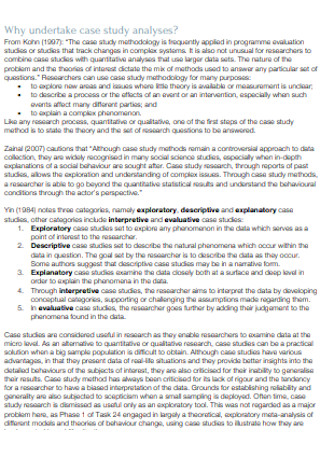
Sample Case Study Analysis Template
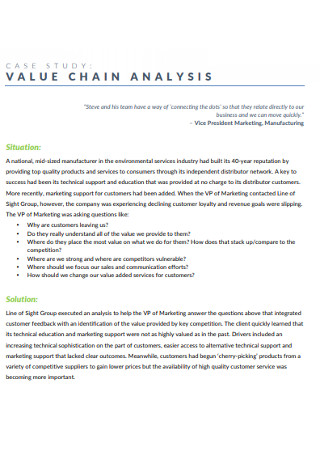
Case Study Value Chain Analysis
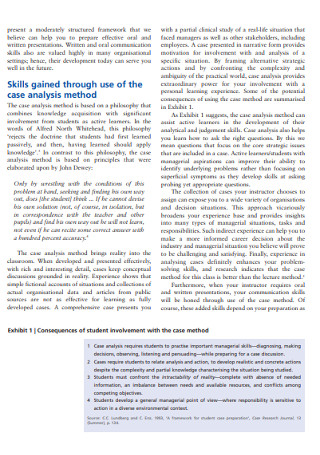
Basic Case Study Analysis Template
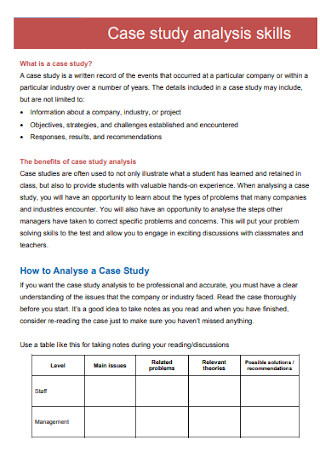
Case Study Skills Analysis Template
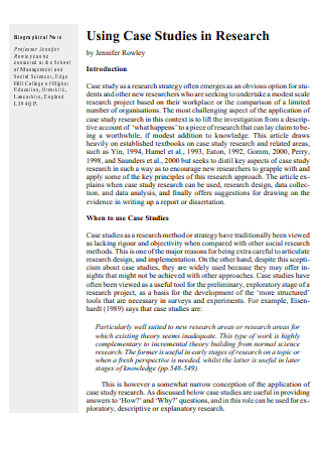
Case Study Research Analysis Template
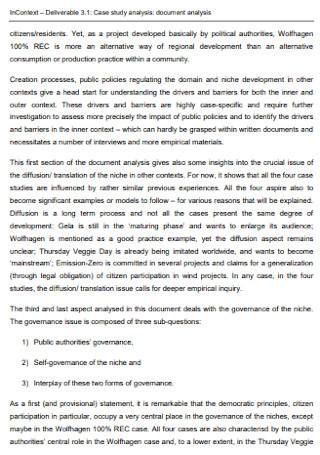
Simple Case Study Analysis Template

Case Study Quantitative Analysis Template

Case Study Data Analysis Template
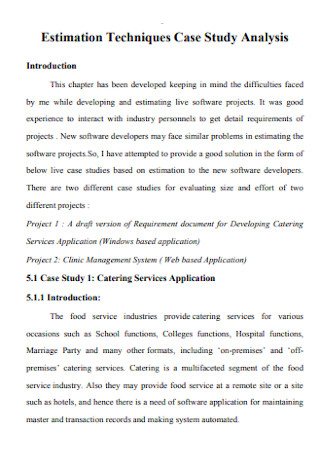
Estimation Techniques Case Study Analysis
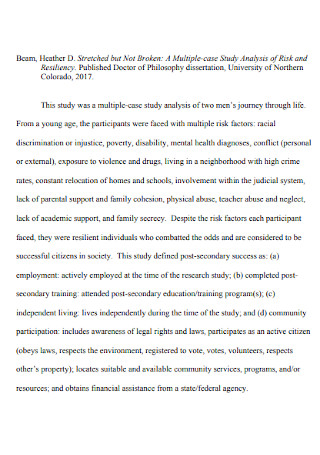
Multiple-Case Study Analysis
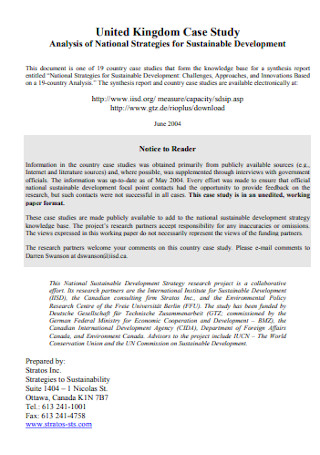
Case Study Strategies Analysis
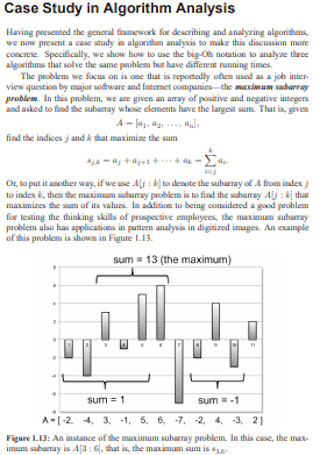
Case Study in Algorithm Analysis
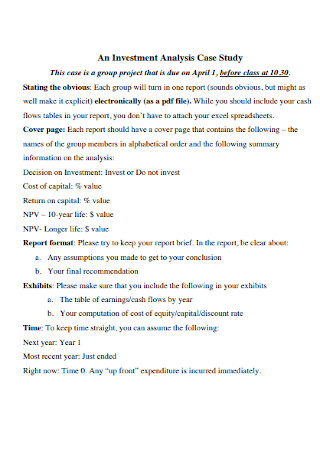
Investment Analysis Case Study
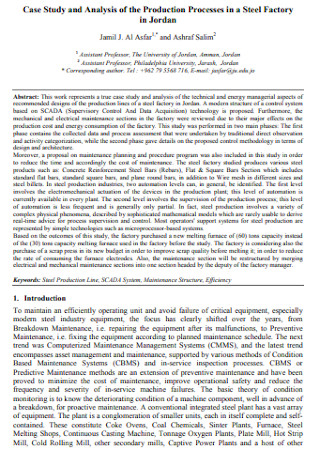
Case Study and Production Analysis
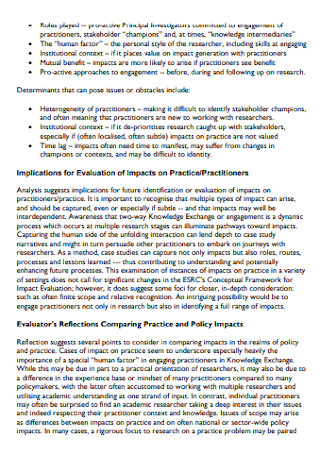
Case Study Research Analysis Example

Project Case Study Analysis Template

Case Study Family Impact Analysis
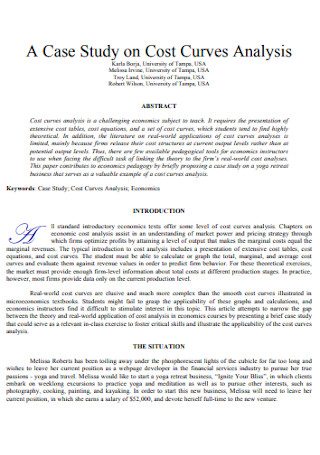
Case Study on Curves Analysis
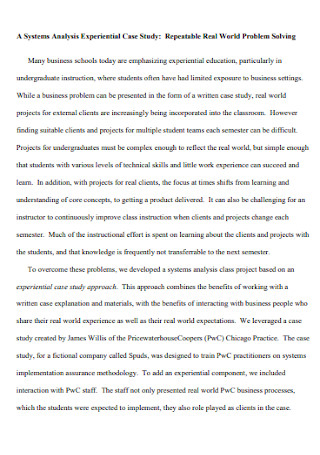
Case Study Experiential Analysis Template

Case Study Taxation Analysis
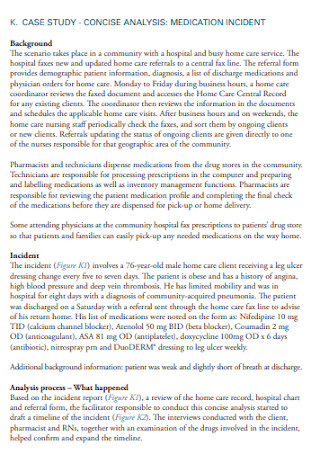
Case Study Medication Analysis
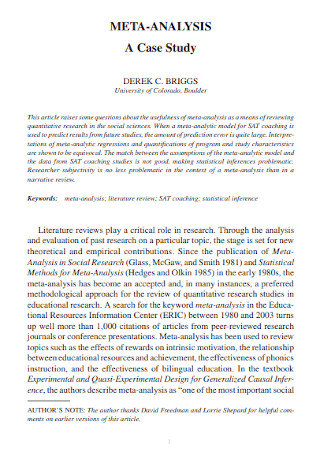
Meta Case Study Analysis
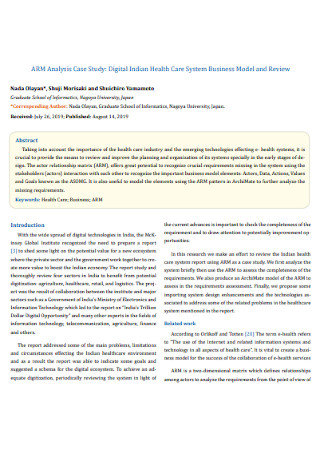
Case Study Health Care Analysis
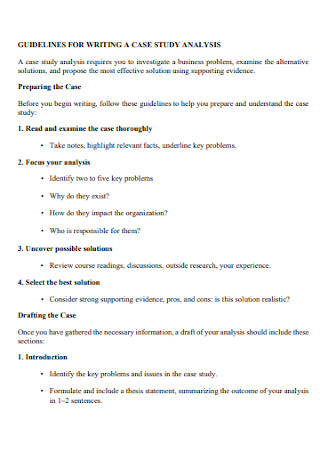
Case Study Institute Analysis
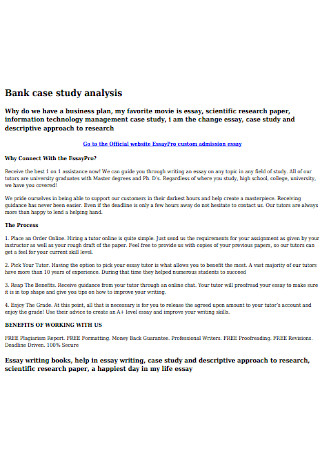
Bank Case Study Analysis Template

Case Study Smartphone Analysis Template
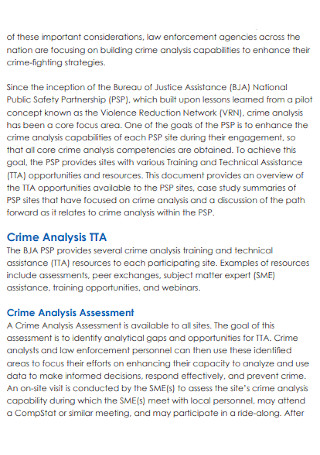
Crime Analysis Case Study
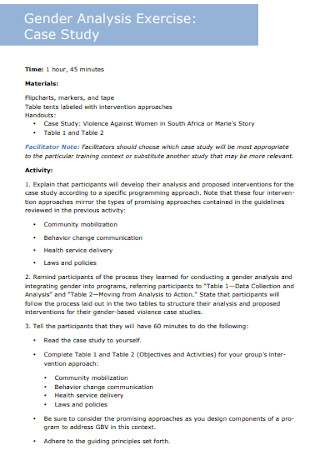
Case Study Exercise Analysis
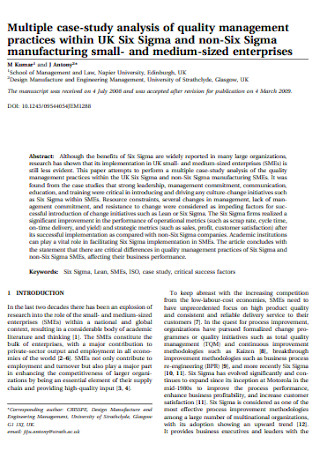
Multiple Case Study Analysis Template
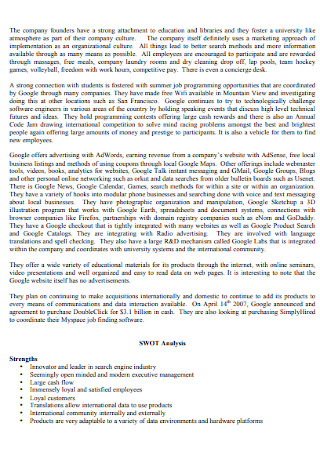
Marketing Case Study Analysis
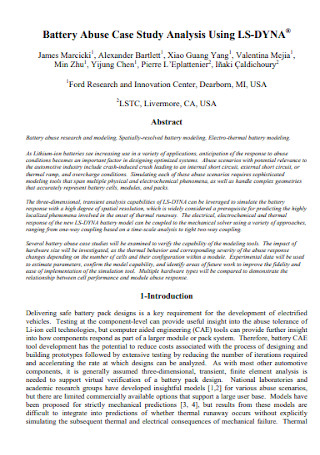
Battery Abuse Case Study Analysis
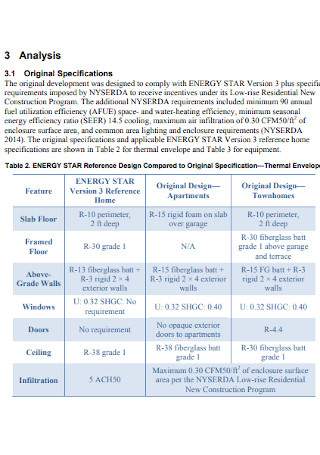
Multifamily Case Study Analysis
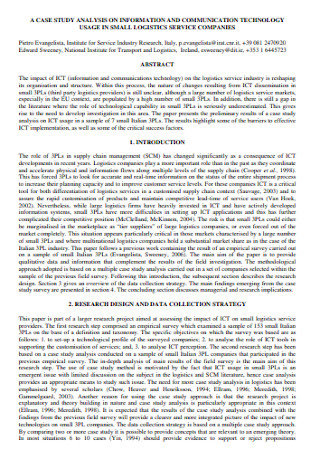
Company Case Study Analysis Template

Teaching Case Study Analysis Template
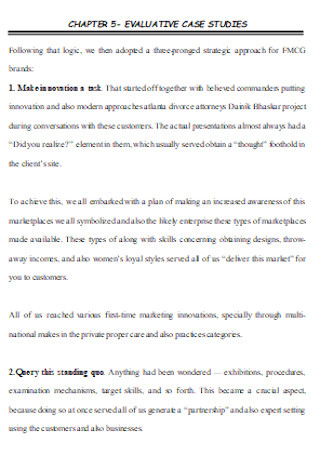
Evaluative Case Study Analysis
1. architecture case study analysis , 2. business marketing case study analysis , 3. user research case study analysis, 4. psychology case study analysis, step 1: create an introduction, step 2: present the case study, step 3: provide the solution and implementation, step 4: discuss the end results, step 5: proofread and revise the analysis, step 6: finalize the case study analysis, share this post on your network, file formats, word templates, google docs templates, excel templates, powerpoint templates, google sheets templates, google slides templates, pdf templates, publisher templates, psd templates, indesign templates, illustrator templates, pages templates, keynote templates, numbers templates, outlook templates, you may also like these articles, 25+ sample business impact analysis templates in pdf | ms word.

As the COVID-19 continues and has already affected many lives of people worldwide, there is also big economic damage that negatively affected the global economy. According to Statista's estimate,…
53+ SAMPLE Analysis Report Templates in PDF | MS Word | Google Docs | Apple Pages

Are you familiar with those complex statistical graphs, detailed organizational charts, or tables presented in business? Such visual representations are useful to give information, define relationships, and show patterns of…
browse by categories
- Questionnaire
- Description
- Reconciliation
- Certificate
- Spreadsheet
Information
- privacy policy
- Terms & Conditions

IMAGES
VIDEO
COMMENTS
In this article, we explore the concept of a case study, including its writing process, benefits, various types, challenges, and more.. How to write a case study. Understanding how to write a case study is an invaluable skill. You'll need to embrace decision-making - from deciding which customers to feature to designing the best format to make them as engaging as possible.
Identify the key problems and issues in the case study. Formulate and include a thesis statement, summarizing the outcome of your analysis in 1-2 sentences. Background. Set the scene: background information, relevant facts, and the most important issues. Demonstrate that you have researched the problems in this case study. Evaluation of the Case
Case study examples. While templates are helpful, seeing a case study in action can also be a great way to learn. Here are some examples of how Adobe customers have experienced success. Juniper Networks. One example is the Adobe and Juniper Networks case study, which puts the reader in the customer's shoes.
Briefly introduce the problems and issues found in the case study. Discuss the theory you will be using in the analysis; Present the key points of the study and present any assumptions made during the analysis. Findings. This is where you present in more detail the specific problems you discovered in the case study.
For example, the case study quotes the social media manager and project manager's insights regarding team-wide communication and access before explaining in greater detail. Takeaway: Highlight pain points your business solves for its client, and explore that influence in greater detail. 3. EndeavourX and Figma.
Revised on November 20, 2023. A case study is a detailed study of a specific subject, such as a person, group, place, event, organization, or phenomenon. Case studies are commonly used in social, educational, clinical, and business research. A case study research design usually involves qualitative methods, but quantitative methods are ...
Case study is unbounded and relies on gathering external information; case analysis is a self-contained subject of analysis. The scope of a case study chosen as a method of research is bounded. However, the researcher is free to gather whatever information and data is necessary to investigate its relevance to understanding the research problem.
Step 2: Create a theoretical framework. Theoretical frameworks are used to guide the analysis and interpretation of data in a case study. The framework should provide a clear explanation of the key concepts, variables, and relationships that are relevant to the research question. The theoretical framework can be drawn from existing literature ...
1. Make it as easy as possible for the client. Just like when asking for reviews, it's important to make the process as clear and easy as possible for the client. When you reach out, ask if you can use their story of achievement as a case study for your business. Make the details as clear as possible, including:
In case study research, the unit of analysis can be an individual, a group, an organization, a decision, an event, or even a time period. It's crucial to clearly define the unit of analysis, as it shapes the qualitative data analysis process by allowing the researcher to analyze a particular case and synthesize analysis across multiple case ...
A case study is an in-depth, detailed analysis of a specific real-world situation. For example, a case study can be about an individual, group, event, organization, or phenomenon. ... Simple Case Study Examples. Less is often more, and this is especially true when it comes to creating designs. Whilst you want to create a professional-looking ...
Instrumental Case Studies: These are conducted to understand a broader issue and use the specific case as a means to gain insights into the larger context. Collective Case Studies: Involving the study of multiple cases, this type allows for comparisons and contrasts, offering a more comprehensive view of a phenomenon or problem.
The purpose of case study research is twofold: (1) to provide descriptive information and (2) to suggest theoretical relevance. Rich description enables an in-depth or sharpened understanding of the case. It is unique given one characteristic: case studies draw from more than one data source. Case studies are inherently multimodal or mixed ...
Advantages of a case study: Case studies showcase a specific solution and outcome for specific customer challenges. It attracts potential customers with similar challenges. It builds trust and credibility with potential customers. It provides an in-depth analysis of your company's problem-solving process. Disadvantages of a case study:
The reason instructors assign case studies is for students to sharpen their critical analysis skills, understand how companies make profits, etc. Below are some case study examples in research, suitable for students: ... Keeping the case study simple and clean can help readers focus on the most important aspects.
A case study is an in-depth study of one person, group, or event. In a case study, nearly every aspect of the subject's life and history is analyzed to seek patterns and causes of behavior. Case studies can be used in many different fields, including psychology, medicine, education, anthropology, political science, and social work.
If you are wondering how to make case study format, here are the elements to include in your case study paper format. Title. Create an interesting title for your work. Keep it simple and short. Subtitle. Here you need to briefly elaborate on the accomplishment. What you have done and how you got there.
Defnition: A case study is a research method that involves an in-depth examination and analysis of a particular phenomenon or case, such as an individual, organization, community, event, or situation. It is a qualitative research approach that aims to provide a detailed and comprehensive understanding of the case being studied.
A case study is a detailed analysis of a specific topic in a real-world context. It can pertain to a person, place, event, group, or phenomenon, among others. The purpose is to derive generalizations about the topic, as well as other insights. Case studies find application in academic, business, political, or scientific research.
Explain what you will examine in the case study. Write an overview of the field you're researching. Make a thesis statement and sum up the results of your observation in a maximum of 2 sentences. Background. Provide background information and the most relevant facts. Isolate the issues.
Develop a clear and well-written case study analysis for your assignment or project in architecture, business, education, interior design, marketing, psychology, social work, or other subject areas. Make things easy and simple in your case study analysis work while using our sample case study analysis templates available in PDF format.
Case study protocol is a formal document capturing the entire set of procedures involved in the collection of empirical material . It extends direction to researchers for gathering evidences, empirical material analysis, and case study reporting . This section includes a step-by-step guide that is used for the execution of the actual study.
Despite the precarious state of marine turtles as a highly endangered species, our understanding of their diseases remains limited. This case report presents a detailed pathological investigation of spirorchiidiasis, a blood fluke infection that poses a substantial threat to marine turtles. This retrospective study examined three cases of spirorchiid-infected sea turtles, specifically, green ...